Capital:
Amman
Currency
Dinar
Best time to visit:
Spring (from mid-March to the end of April) and autumn (from the end of September to the end of November), when the heat is not too intense, are the best seasons for a trip to Jordan.
In a word:
Salam Alaykum (good morning)
Vaccines
None
Warnings:
- For bathing in the Dead Sea: pay attention to your eyes because the extremely salty water can be very annoying;
- For the Red Sea: get some plastic sandals because the sting of the scorpion fish, which hides in the sand, is really painful;
- Avoid the border areas between Iraq and Syria;
- Don't underestimate the temperature ranges in the Wadi Rum desert and Petra.
At the table:
The bread (khobz or pita) is delicious and present at every meal on the Jordanian table. Carnivores will love the shawarma, sandiwch stuffed with mutton or spit-roasted chicken, which are sold everywhere. Also try mensaf, a national dish made from lamb cooked in milk and served on a bed of rice and pine nuts.
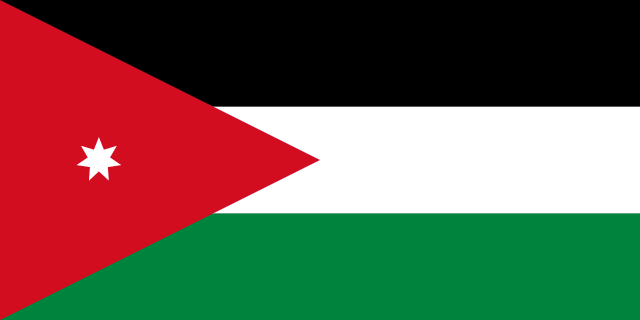
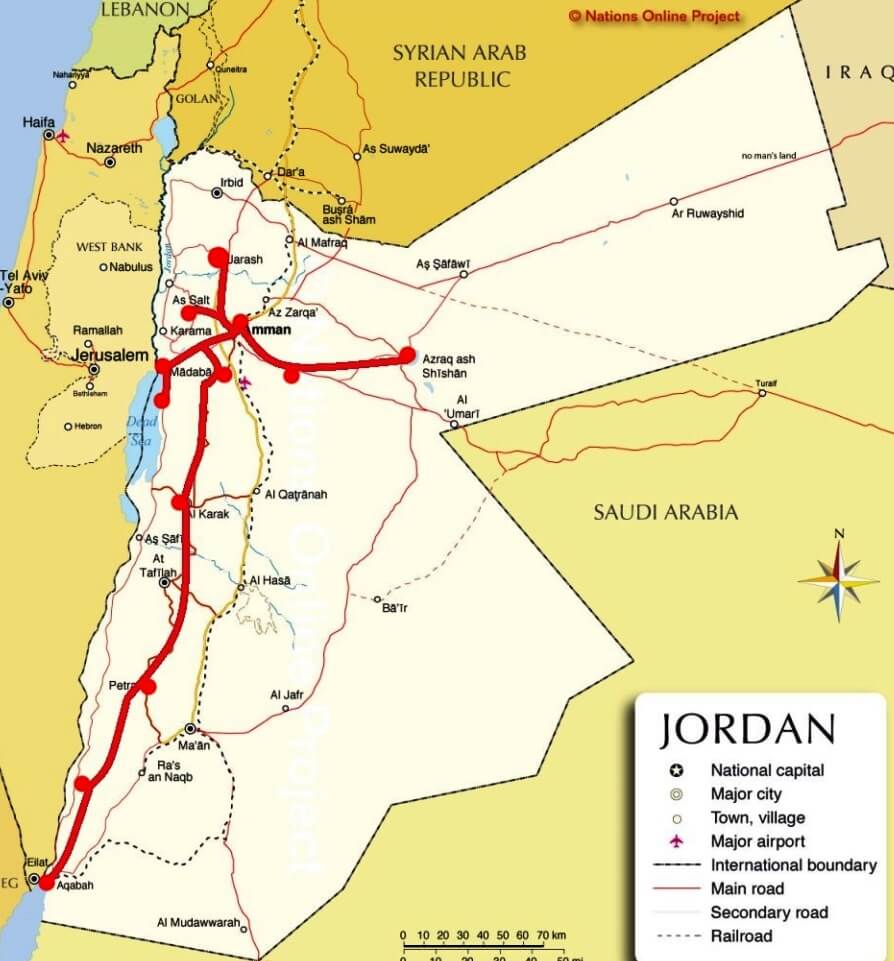
Essential experiences:
Walk along the Siq, the narrow corridor between the rocks that acts as an access road to Petra; Spend a couple of nights in a Bedouin tent in the Wadi Rum desert; Dive in to discover the colorful and populous depths of the Red Sea; Float slyly at the lowest point on Earth by the Dead Sea; Be enchanted at Bethany where Jesus was baptized.
Jordan has been enchanting visitors for centuries with its world heritage sites, picturesque cities, striking desert landscapes and a people with a heart of gold.
A country of incredible beauty, which can boast an unparalleled archaeological heritage, amazing landscapes that take your breath away (ranging from the desert, to the mountains, to the sea in less than 500km) and a Middle Eastern charm that literally bewitches travelers from all over. the world.
Add to this a tasty cuisine, the kindness of a welcoming and hospitable people always eager to share their culture, and you have a pretty clear idea of what to expect from a trip to Jordan.
Hospitality for travelers dates back to ancient times, from the times when camel caravans traveled the legendary road of the Kings carrying incense in exchange for spices.
Nabataean merchants, Roman legionaries, Muslim warriors, soldiers of the Crusades have all reached this land leaving behind them spectacular moments: Roman theaters, Crusader castles and Christian mosaics that still shine and attract many tourists.
Our suggested itinerary (21 days) | |
five days: | Amman (visit of the downtown and the King Abdullah Mosque and the Citadel); Desert Castles (Qasr Kharana and Qusayr Amra); Salt |
five days: | Bethany (site of Jesus' baptism); Dead Sea; Petra (visit of the historical site and trekking |
six days: | Wadi Rum Desert (various off-road and bedouin activities); Aqaba (relaxation in the Red Sea with the possibility of diving and snorkeling) |
five days: | Umm Qeis; Jerash (visit Roman site); Madaba (visit to the Church of San Giorgio); Mount Nebo; Kerak (visit to the stronghold); return to Amman |
We recommend purchasing the Jordan Pass which is a special package designed specifically for travelers that includes admissions to over 40 tourist attractions in Jordan, including Petra and Wadi Rum, and a tourist entry visa to the country: great savings!
Once purchased, simply print it out and present it at customs controls once landed at the airport or at the box office of the places of interest for validation.
"Despite being in a region historically plagued by conflict, Jordan is the only quiet home in the noisy neighborhood, a friendly oasis open to tourism. Hospitality reigns supreme, violent crime is extremely rare, and according to Gallup's 2017 global law and order report, Jordan ranks ninth (out of 135 countries) in the personal security ranking - the United States ranks 26th. place. There is no reason to be afraid of taking a trip to Jordan, just take the usual precautions that apply in every country ". Lonely Planet
After landing in the Jordanian capital, we take our trusty backpack and, leaving the airport, we are immediately kidnapped by the heat of this land.
We meet Khaled that, together with Cristina Cori, they run the very useful group: “Amici della Giordania“, he will be one of our guardian angels in this new adventure. With him we immerse ourselves headlong into the local culture of Amman Downtown while enjoying the first excellent Jordanian dinner at the Hashem Restaurant, one of the must-haves of this city!
The senses lost between chickpea hummus, crunchy felafel, broad beans and tasty Arabic bread up to the delicious Habiba Sweets knafa!
We stroll among spice kiosks, pomegranate juices, traditional colorful clothes, Turkish coffee with cardamom with the music and joy of the people around us!
In the late evening we arrive at our hotel in Amman: the Lijam Hotel, a very modern building where we will stay these first four days in a spacious apartment with two bedrooms, two bathrooms, a living room and a small kitchen: all for us! As well as featuring an excellent restaurant and a range of services ranging from tailoring to the SPA to a very Western bar for young people!
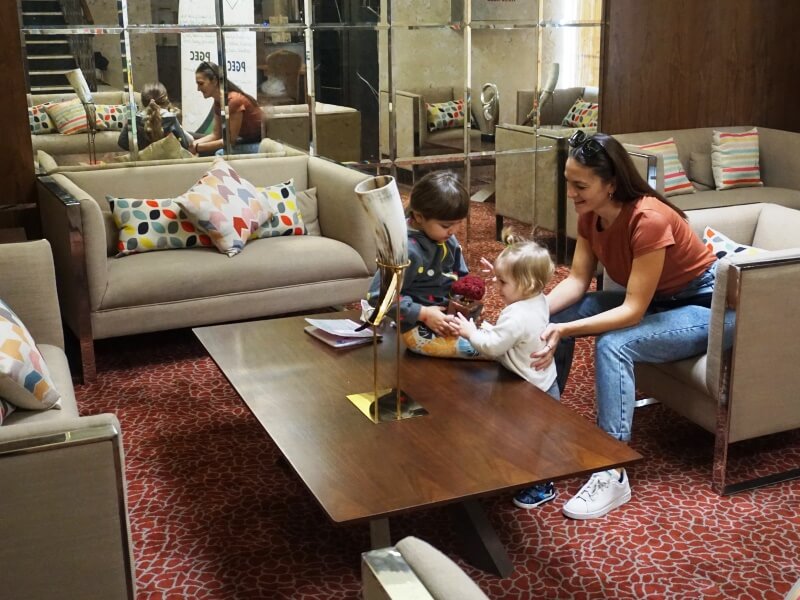
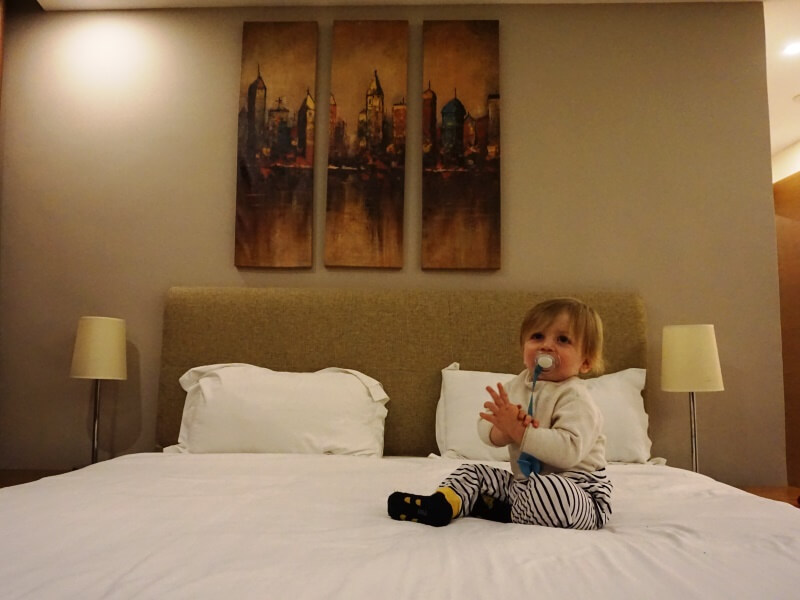
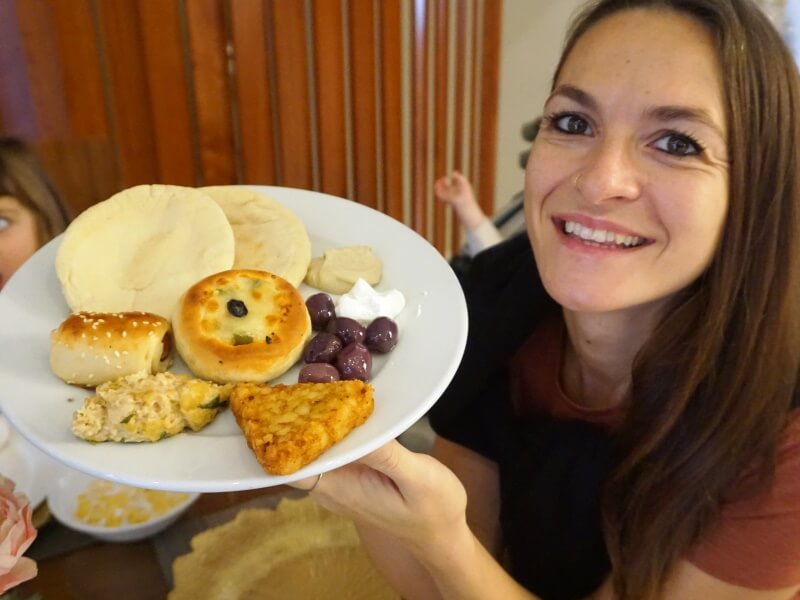
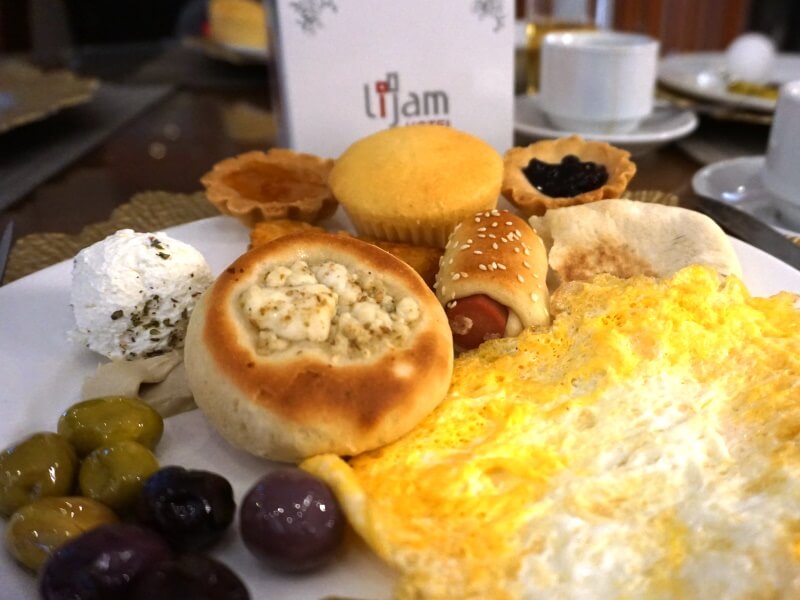
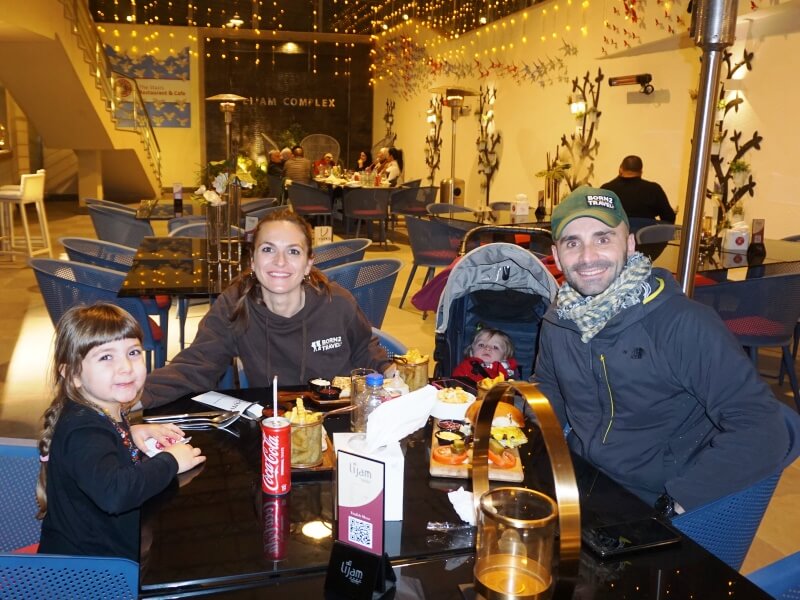
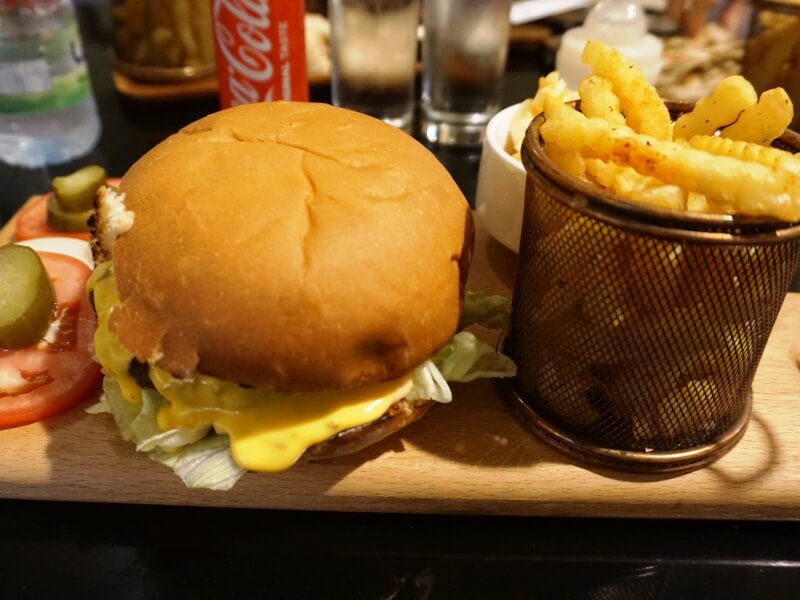
Today we spend the day with Mohammed, a patient and friendly local guide who takes us to discover his wonderful city.
King Abdullah al Hussein Mosque stands in front of an Orthodox church, a sign of the country's great tolerance.
King Abdullah Mosque, dedicated by King Hussein to his grandfather, can be seen from all over the city. Large and shiny, it can hold up to 7,000 faithful plus 3,000 outside.
Beautiful from the outside, all white with blue domes, a true poem. Inside, on the other hand, it is very spartan but wide, so much so that Nora enjoyed running left and right.
In addition to objects for religious use, we find a huge chandelier and an even larger carpet that covers the entire floor.
Access is also possible for non-Muslims, even during Ramadan, but don't forget to take off your shoes before entering and wear a dishdasha (provided just before the ticket office. Entrance ticket 2 JOD, not covered by Jordan Pass).
Citadel. The archaeological area of the Amman citadel stands on the top of one of the seven hills that make up the city. The archaeological site is located at 850 m (s.l.m.) on the hill called Al Qala'a and houses the remains of ancient Rabbat-Ammon.
The main monuments can be visited on foot, going down the hillside. In fact, you can walk the access stairway to the viewpoint in front of the large Roman amphitheater, an excellent spot for your photos!
From here we leave to discover the most important monuments that will leave you breathless.
Don't miss the Temple of Hercules. Here the 6 marble columns with an incredible height of 10m stand out, and the remains of a 12m high stone statue of Hercules, destroyed after an earthquake, are preserved. Of this giant only one hand, three fingers and one elbow remain.
Umayyad Palace: this large complex is located on the Jabal Al Qal'a hill.
Its construction dates back to the first half of the 7th century. Although many parts were destroyed by an earthquake in 749 AD, it is an important example of Islamic architecture.
Very interesting visit and included in the Jordan Pass.
Before immersing ourselves in the fairy world of the Roman Theater, we stop in a delightful restaurant: Zahda, where Mohammed makes us taste delicacies such as skewers of sheep, sesame cream with potatoes, an excellent aries (a kind of pizza filled with minced kebab) and various types of kofta (meatballs).
On foot we head to the Roman Theater, the ancient beating heart of Amman, this extraordinary 2000-year-old amphitheater testifies to the engineering and architectural skills of the Romans.
Its steep structure has given this 6,000-seat amphitheater incredible acoustic characteristics. The immense space that opens to your eyes when you step out onto the still perfectly preserved bleachers leaves you breathless and makes you recall the evocative shows that drew the crowds of 2000 years ago to those stands.
Stefy and Nora climb to the top and enjoy a wonderful view.
Meanwhile, the pink clouds paint the sky with magic, the birds chase each other and the muezzin intones his song.
We leave for the desert castles… but which ones to visit?
Consider that the Nabataean dynasty left many vestiges scattered across the stony plains of the eastern desert. Today we will focus on Qasr Kharana and Qusayr Amra.
In the middle of a vast desolate plain, along the road that connects Azraq to Amman towards the (nearby) border with Saudi Arabia, stands the Qasr Kharana, an imposing structure with thick walls whose function remains mysterious today.
It could have been a caravanserai due to the appearance of a "khan" (caravanserai) but it was not located along any important trade route.
Historians have also hypothesized that the building served as a meeting place between the lords of Damascus and the Bedouins of the area. This building is equipped with round towers that seem to have a defensive function and equipped with narrow slits to let in light and air.
Not far away is the small Qusayr Amra, a UNESCO World Heritage Site.
This ancient building is famous for its bold eighth-century frescoes depicting moments of pleasure enlivened by wine, women and festive banquets.
In the tepidarium (where people immersed themselves in hot water), nude women are shown bathing a child.
The last room is the calidarium whose ceiling is decorated with a depiction of the zodiac signs.
It is one of the first known attempts to represent the universe on a surface that was not flat.
One of the tastiest sage teas ever tasted, in a Bedouin tent, gives us other moments of contact with a culture so far away from us!
Along the way we stop in a clearing with Khaled, where we prepare an exciting Turkish coffee at sunset, enjoying another moment that we will never forget.
In the Ottoman period, Salt was the administrative center of the Region but, with the passage of time, Amman began to acquire more and more importance, while little Salt, not undergoing the process of modernization of Amman, has retained much of its charm. historical.
Today the city is an open-air museum of old Ottoman architecture, so much so that it was included in the UNESCO World Heritage List in 2021.
30 minutes from Amman, this delightful town remains a hidden gem of the Jordan Valley.
It is called the "city of tolerance" thanks to the excellent balance and coexistence between Muslims and Christians.
Here mosques arise next to churches or liquor stores, all in great harmony.
We recommend visiting Salt on foot because much of the historic center is accessible only through various stairways and the most interesting part of the souk is gathered around the narrow streets closed to traffic.
Visit the recently restored “Beit Abu Jaber” which houses a small local history museum.
We stop for an excellent mint tea at the Osmali Cafè, a very characteristic and picturesque environment.
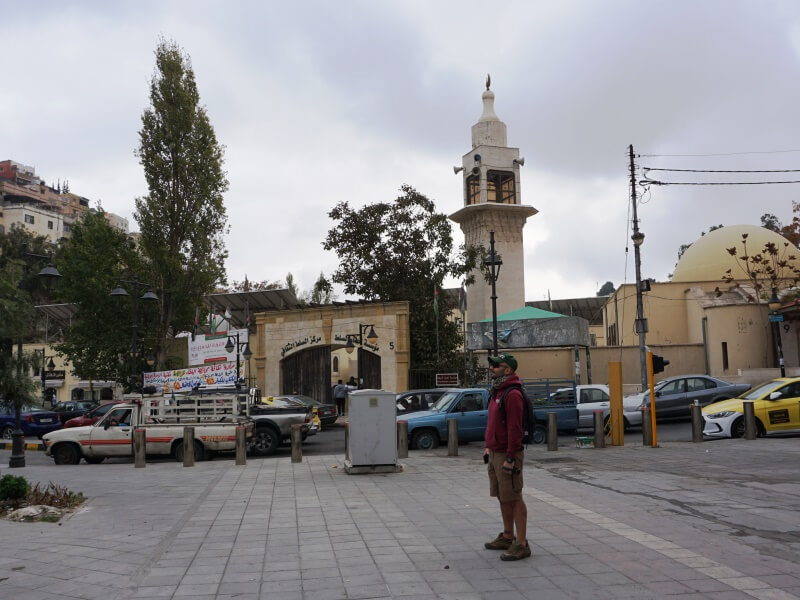
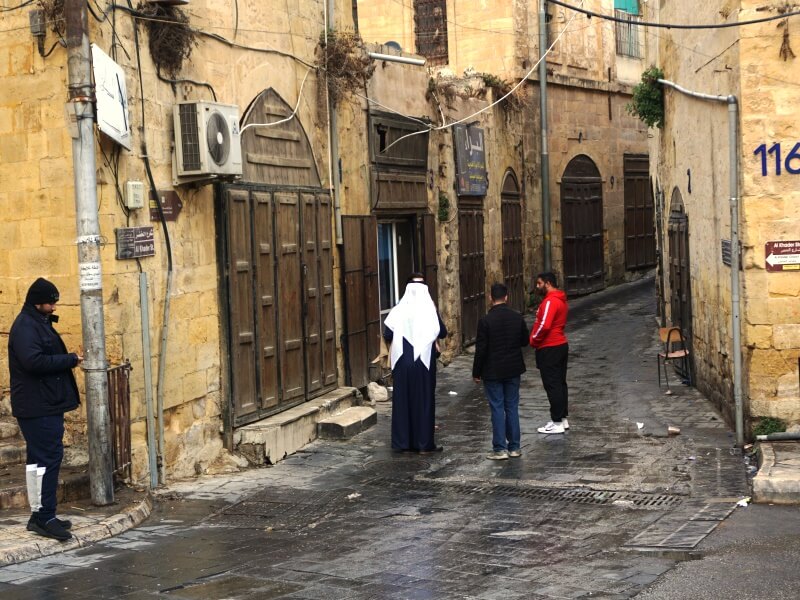
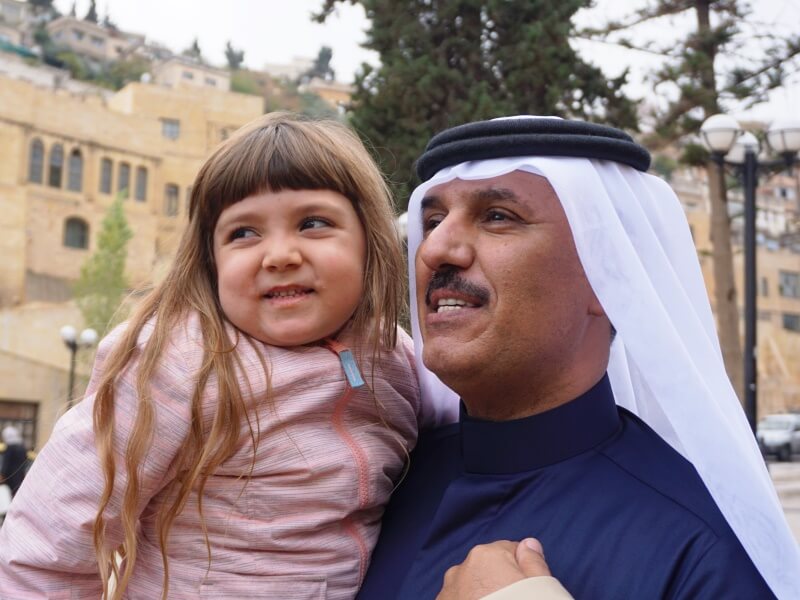
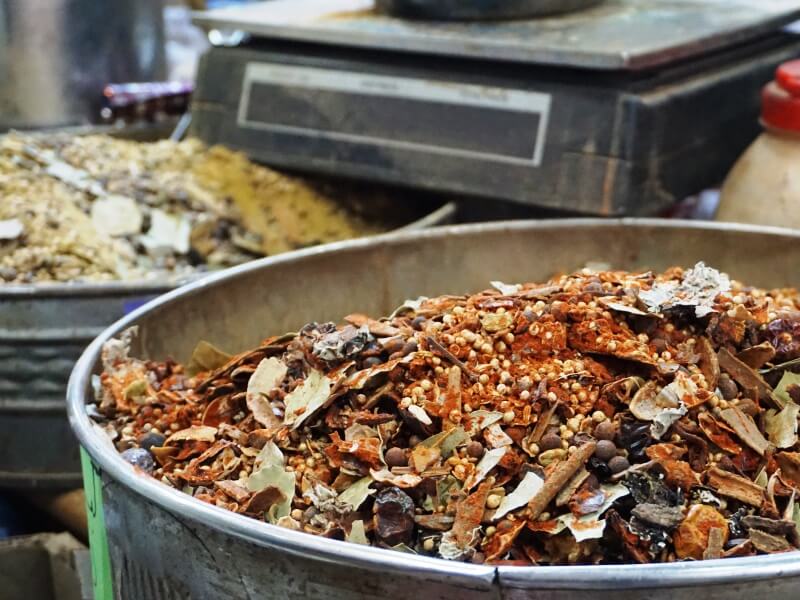
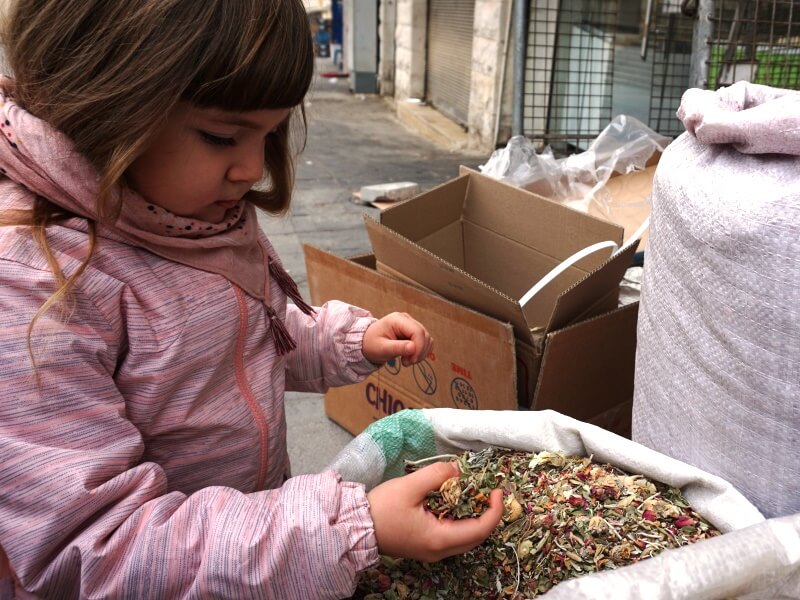
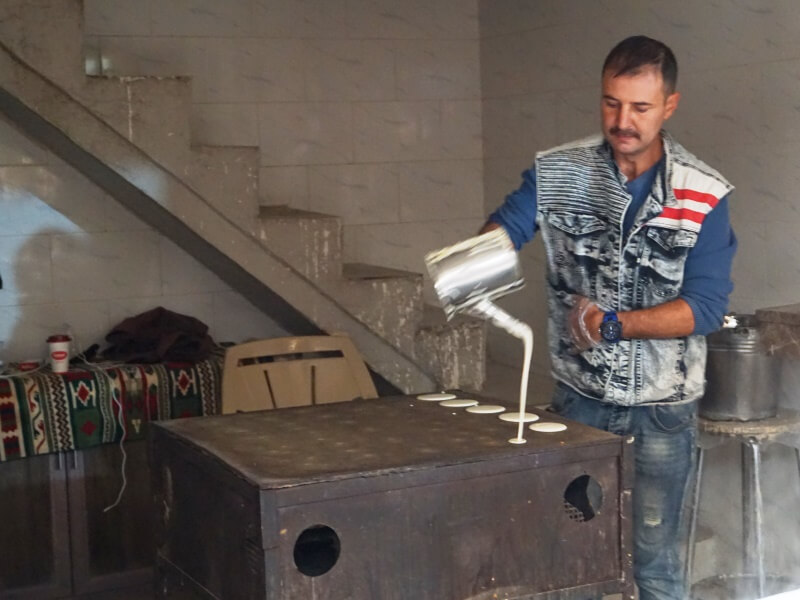
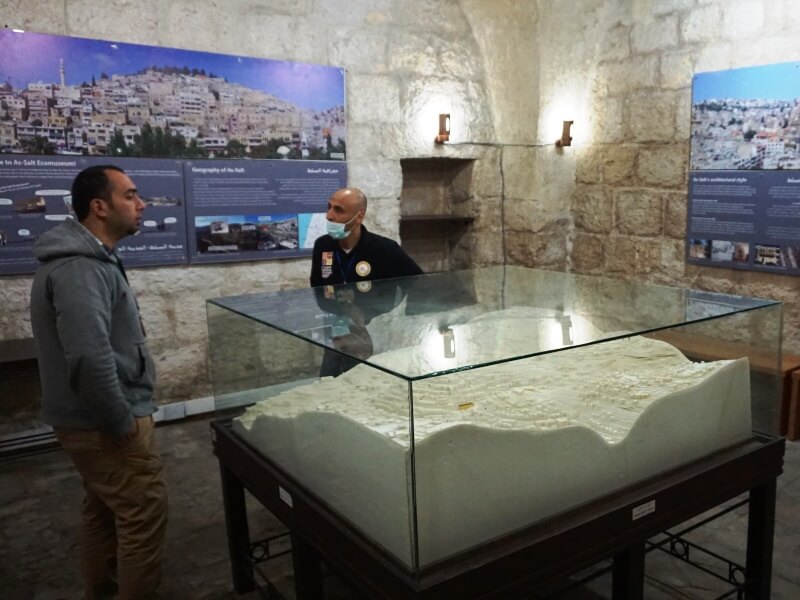
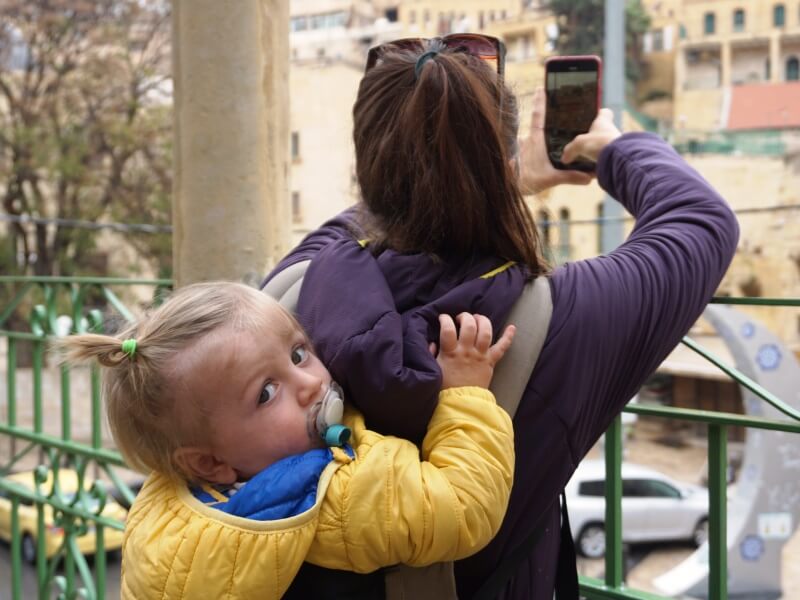
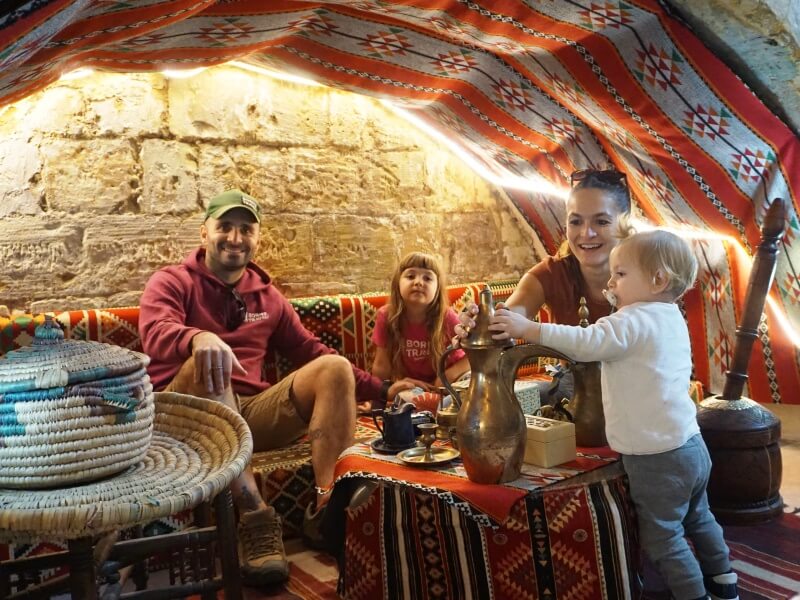
Today we reach al-Maghtas, better known as Bethany, a baptismal site and a UNESCO World Heritage Site.
This complex is located near the delicate border area with Israel and the Palestinian territories.
Remember that, if you were accompanied by a priest, you could even get baptized in the Jordan River, there is also a baptismal font with water from the Jordan available to all.
Regardless of one's religious faith, it is difficult not to get excited in this place where, according to archaeologists, John the Baptist preached and baptized Jesus.
From 1000 meters high in Amman, slowly, we go down to -408 m below sea level: we are on the shores of the Dead Sea, the lowest point on Earth.
Today we will stay at the "Ramada Dead Sea”, a beautiful well-kept facility, equipped with two large swimming pools, an excellent restaurant and above all a private beach that is easily accessible by free shuttle bus, as well as a pleasant 10-minute walk among sleepy dromedaries ruminating.
Dead Sea salts and minerals have always been used for their beneficial dermatological properties.
The high salinity is due to the absence of outlets and the summer temperatures that quickly evaporate the water making all forms of life hostile.
Be careful because while taking a bath, you will discover that you have small cuts or scratches that you did not notice ... absolutely avoid getting water in your eyes!
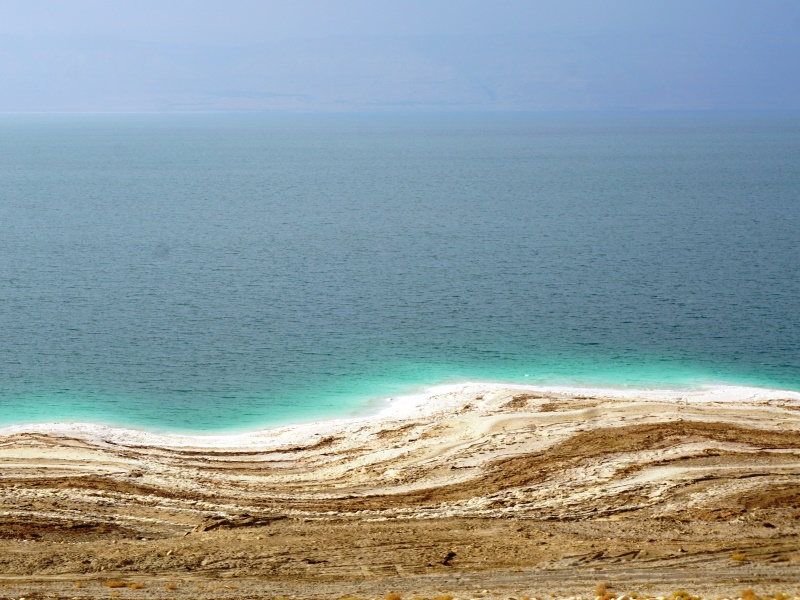
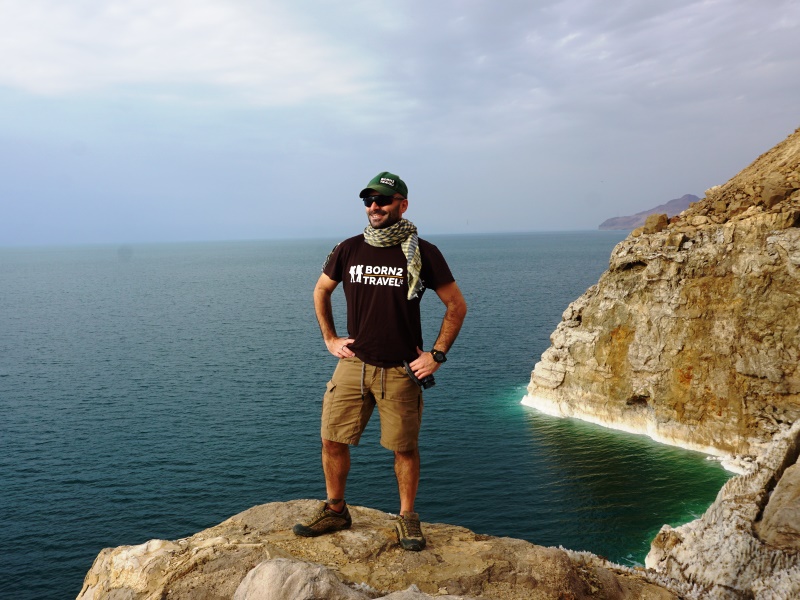
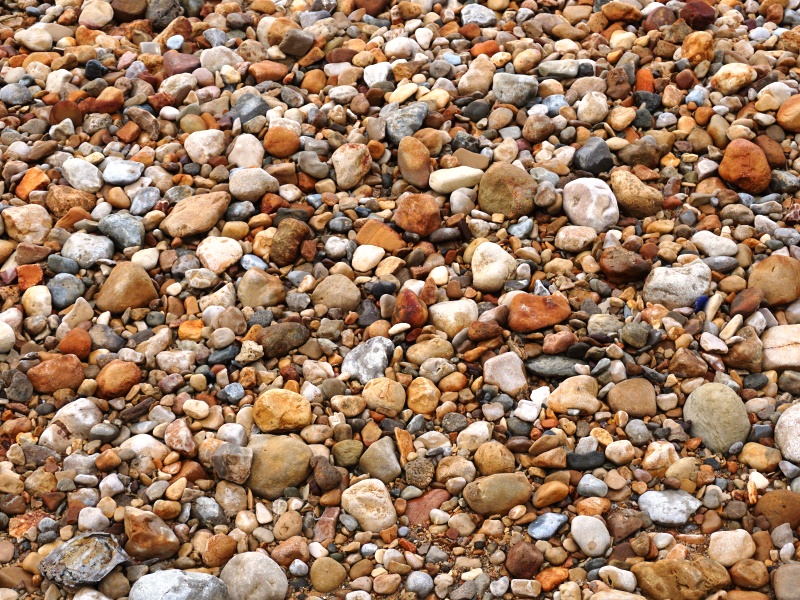
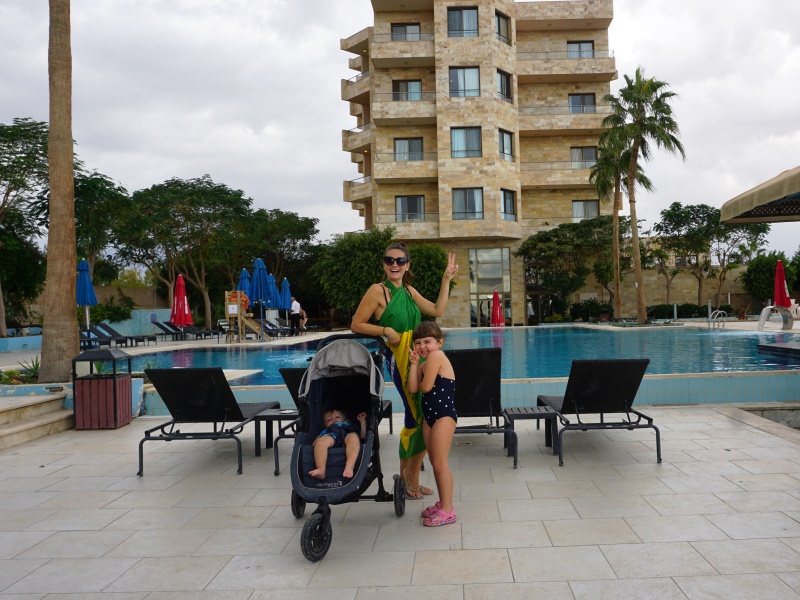
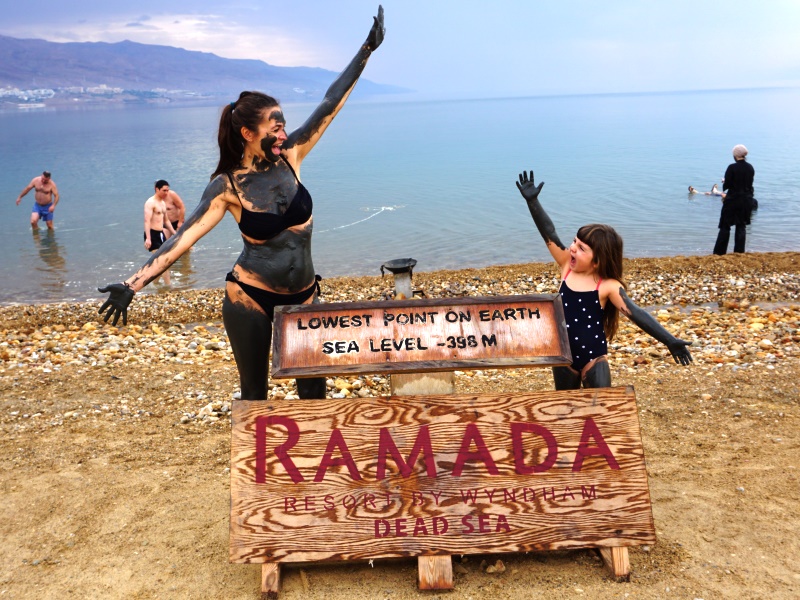
This sea has had many names over time, from the "salty sea" to the "stinking" one (due to the smell of its mud).
We cannot help but get smeared by spreading this muddy mud with beneficial properties all over our body before magically floating on its placid waters. What an experience!
We arrive in Petra in the late afternoon, we will spend three days in this area changing accommodation every day: two nights in two different camps and one in a delightful little hotel in Wadi Musa.
Here we are at Little Petra Bedouin Camp with a baby dromedary that welcomes us at the entrance.
The structure is very nice with these small camps each equipped with a private bathroom in a dream location, in fact, when the darkness takes the place of light a real magic happens: all the small quarries are suddenly illuminated creating a crazy effect, you it seems to be in a real Christmas nativity scene.
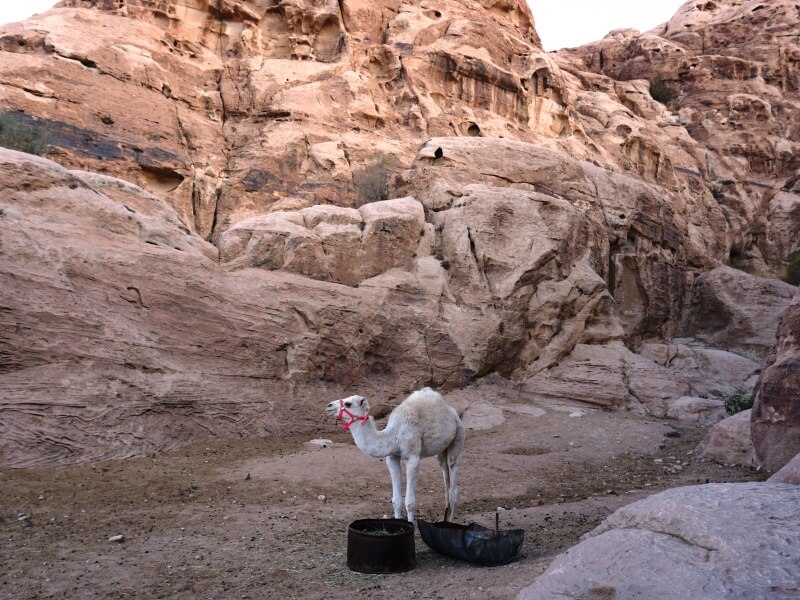
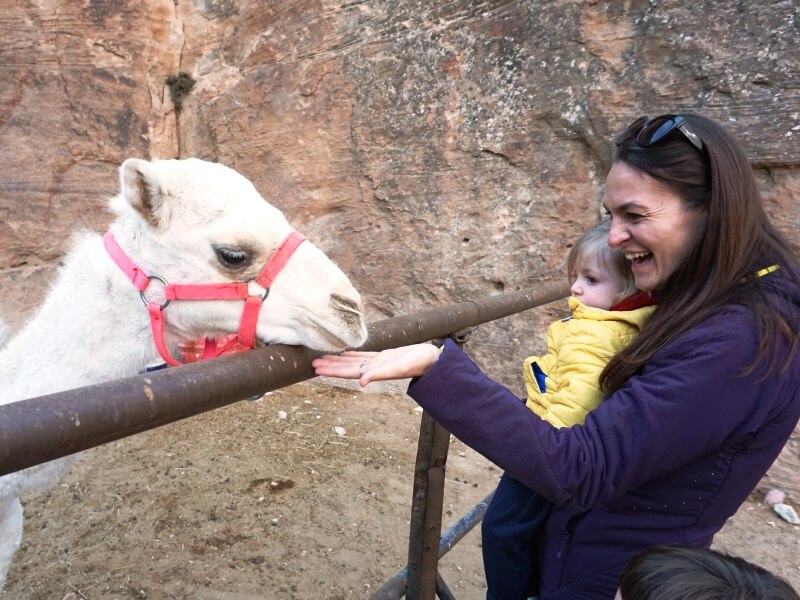
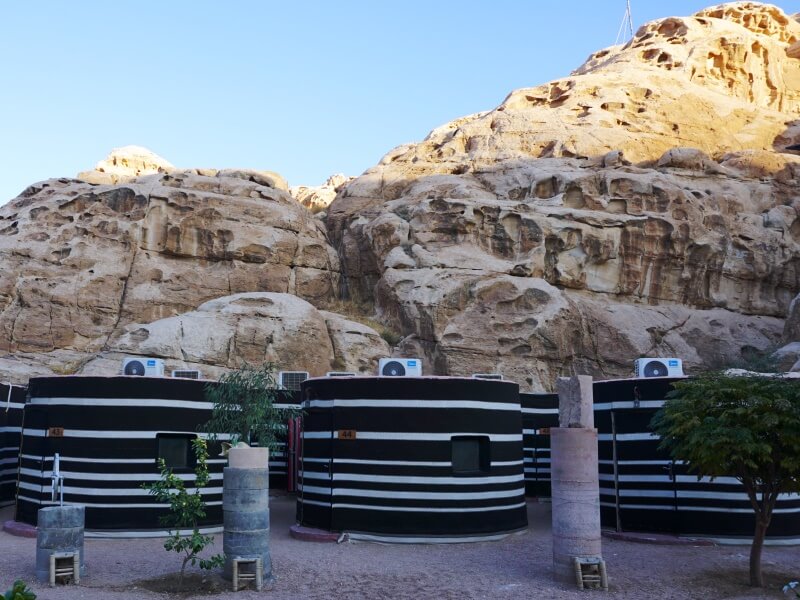
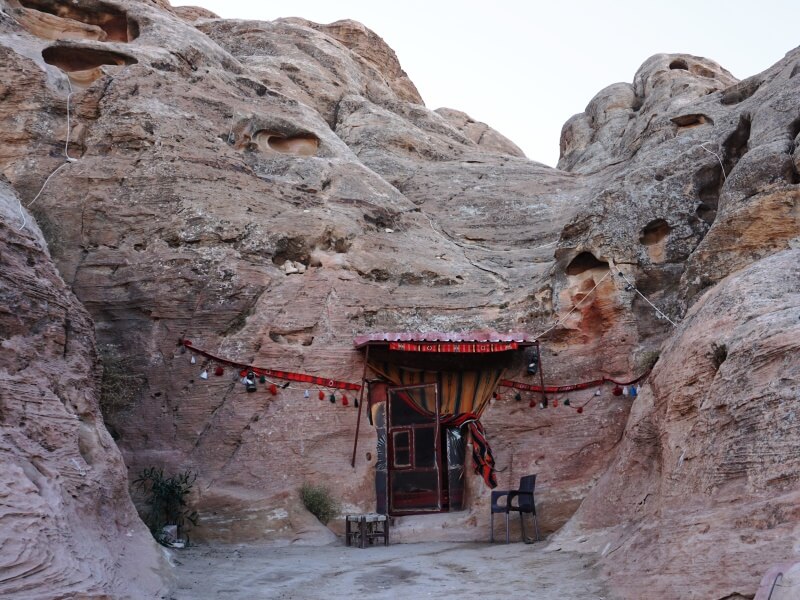
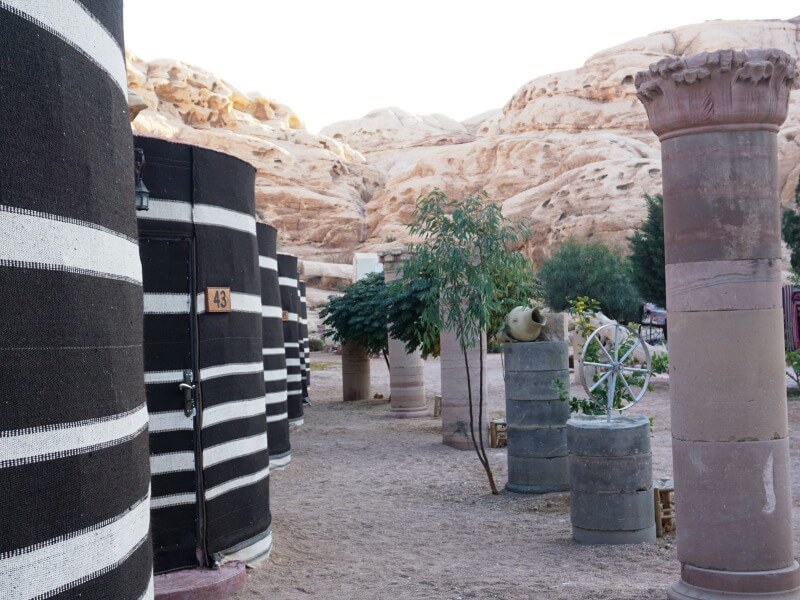
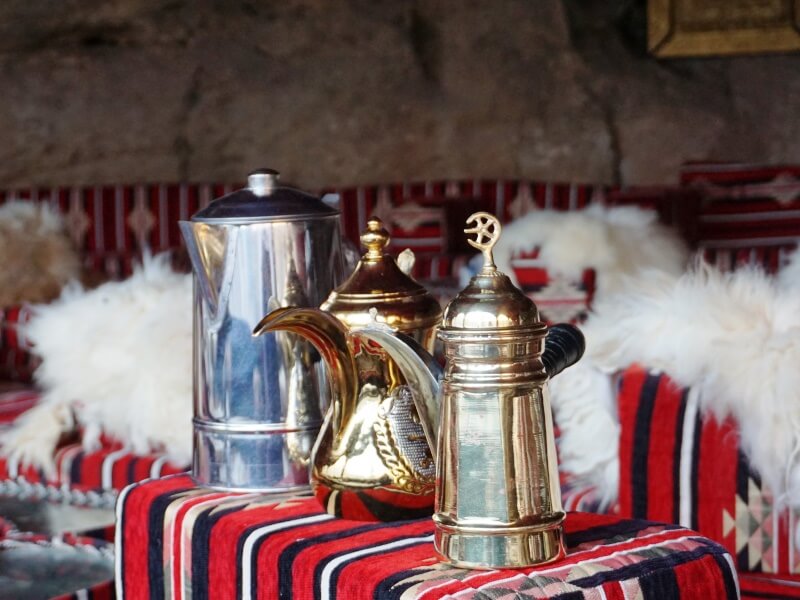
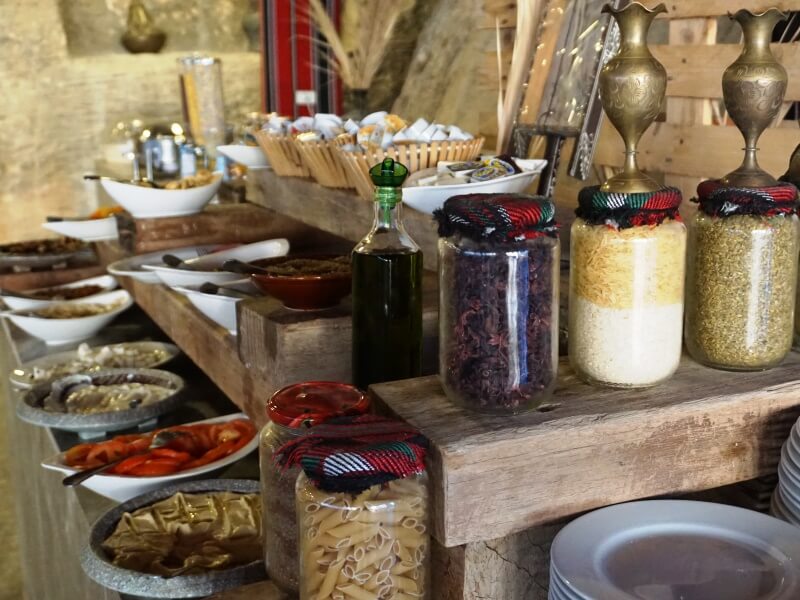
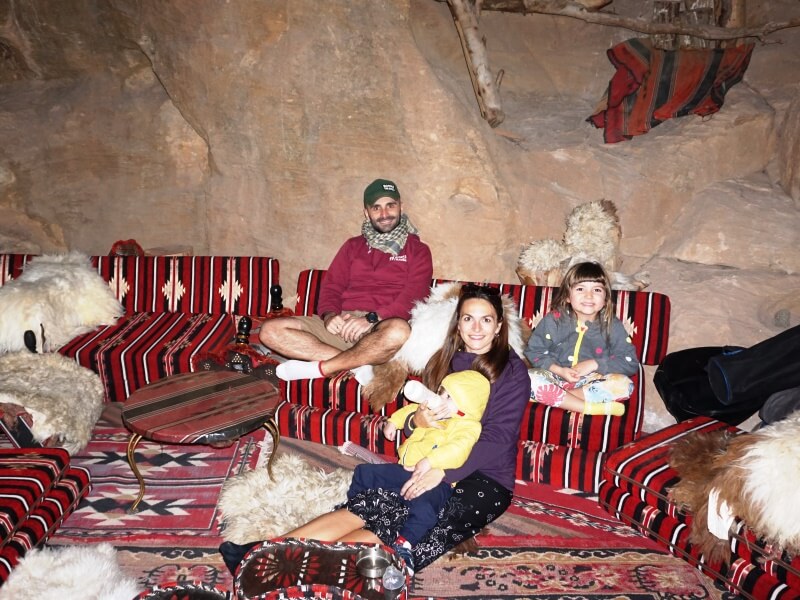
In the evening we are picked up by Rahead, the husband of Cristina, the Italian girl who moved here three years ago and who is now our point of reference in Petra! On board his ramshackle jeep, in the pitch black of the night, we set out on a path between rocks and red sand in the middle of nowhere.
Finally we arrive near an old cave lit by a fire and many candles. Sweet Cristina awaits us with whom we spend another unforgettable evening eating Bedouin dishes amidst local dances and songs.
"Petra is the most beautiful place on earth. Not for its ruins, but for the colors of its rocks, all red and black with green and blue stripes, almost small corrugations, and for the shapes of its stones and spiers, and for its fantastic gorge, in which spring water flows and which is just wide enough for a camel to pass. I have read an endless series of descriptions, but these absolutely fail to give an idea and I am sure that not even I am capable of that, so you will never know what Petra really is, unless you come in person. Only the images in a childhood dream sometimes appear so immense and silent. "
- T.H. LAWRENCE - (Lawrence of Arabia) The Seven Pillars of Wisdom
Petra: at last!
The lost city of Petra, carved into the rock of the canyons of the southwestern Jordanian desert.
The magnificent ancient city, one of the most famous UNESCO sites.
Proclaimed in 2007: "one of the seven wonders of the modern world", it has kept all its charm intact.
The "pink city" until 30 years ago was inhabited by Bedouins, who were then transferred to a nearby camp built ad hoc. Today we have the honor of being accompanied by Khaled and Cristina! We walk along the siq, the gorge enclosed by vertiginous walls that lead you to the first splendor: the Treasure!
We continue the tour following the external siq characterized by the Nabataean Tombs, some of which have a basement due to the raising of the roof of the Wadi over the course of time.
A little further on we pass along the street of the facades where, it is said, the dead were buried to discourage thieves; we are now close to the theater, almost all carved in the rock, some tombs have even been sacrificed for the construction of the steps.
We continue to the tombs of the Nabataean kings from where we witness a magnificent sunset!
On this first visit we brought the stroller which was an excellent aid up to the Tombs of the Kings, because of the steps… for the rest: all feasible!
Nora walked for miles until she succumbed on the way back, finding help first in a dromedary and then in a horse, but it is part of the children's adventure!
What a marvellous day!
Ready to relax in our hotel today: the Petra Sunset Hotel where the cook delights us with a series of finely decorated dishes that he shows us with great pride!
One of the highlights of this hotel is certainly the location, just a few steps away from the Petra Visitor Center!
Wake up early in the morning: today a very interesting trek awaits us: Al-Madras trail also known as the Indiana Jones Trail!
Mark loads Jago in the pouch, behind his back and off you go!
After the 800 meters that separate the Visitor Center from the beginning of the siq, we turn left and begin to advance among the millenary boulders of red sandstone.
Nora climbs like a goat, Khaled helps us entertain her in view of the ten kilometers to go today; Cristina passionately explains the history of this enchanted place and in no time at all: we arrive at one of the most famous view points on the Treasury of Petra where Rahead, with other Bedouin friends, runs a small refreshment kiosk offering us a very welcome tea.
Nora and Jago, barefoot, have fun with the local kids on these large rugs, dancing and playing!
The view point is breathtaking but so is the path itself to reach it (about 45 minutes in an unforgettable picturesque landscape); consider, however, that it can also be reached directly from the Treasury in about 15 minutes by stairs (for those who don't have too much time ... don't make this mistake: dedicate at least two whole days to discover Petra, you won't regret it!)
Ritual photo and we take the road again, it is so pleasant! For about twenty minutes we are joined by Rahead himself who, barefoot, climbs more easily than us, even carrying Nora on his shoulders as he jumps from rock to rock like an ibex! Barefoot!!!
We arrive at the so-called "Sacrifice" where the Nabataeans sacrificed animals for their gods. They had also built drains for the blood ...
We often stop by the many Bedouin ladies who sell souvenirs and every time it's a delicious mint or sage tea or a steaming coffee!
From the Sacrifice we continue to the Tombs of the Kings, we pass the Roman Theater and shortly after we find ourselves sitting on the ground in front of a small cave where the wonderful Leila prepares us one of the best lunches including freshly baked bread, tomato and onion sauces as well as green beans, potatoes, spinach: all excellent and in front of a postcard background!
Thanks Khaled and Cristina for this discovery and for letting us live these unique experiences!
Nora has been fantastic and her trekking efforts have been rewarded with a ride on a donkey to the Treasury!
We are full, satisfied, tired, happy. We take our backpacks and reach the new camp tonight: Wassaif Camp! Here too we find out-of-the-ordinary hospitality, a refuge with tents equipped with all comforts (even air conditioning) where we spend a very pleasant evening in yet another fairytale background!
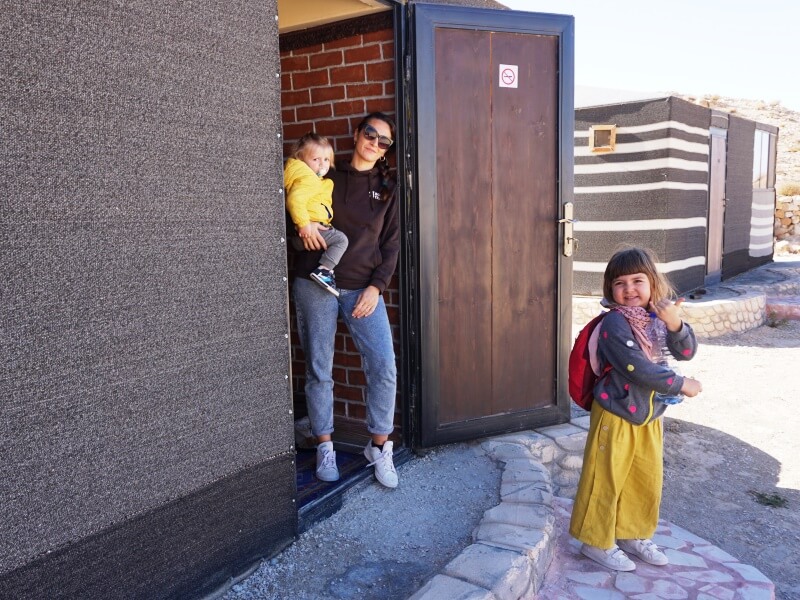
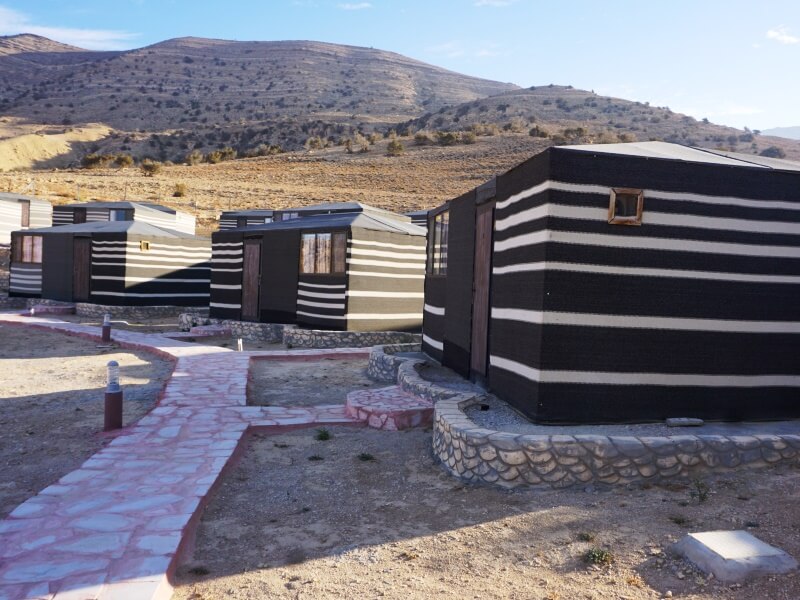
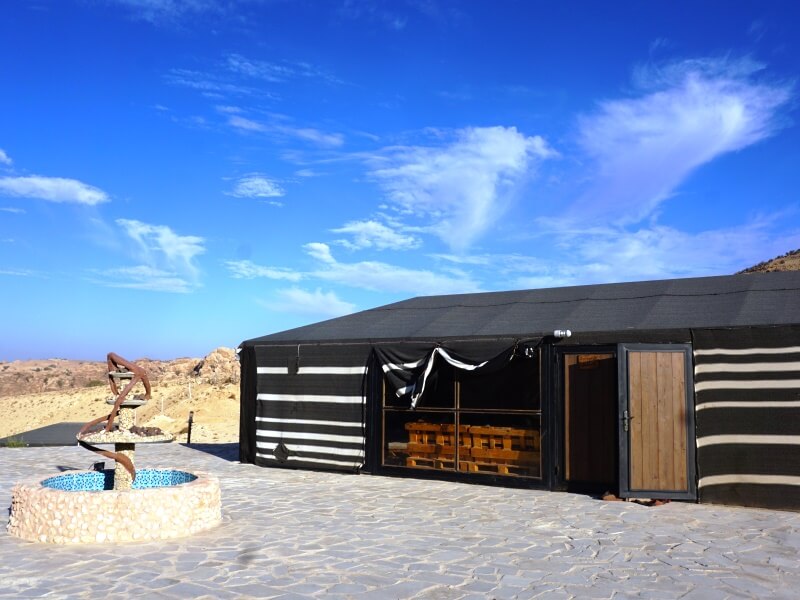
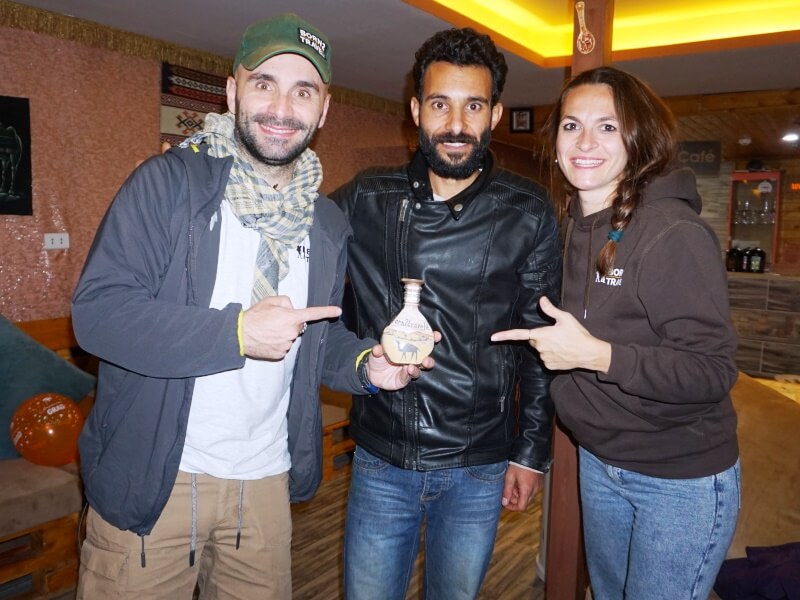
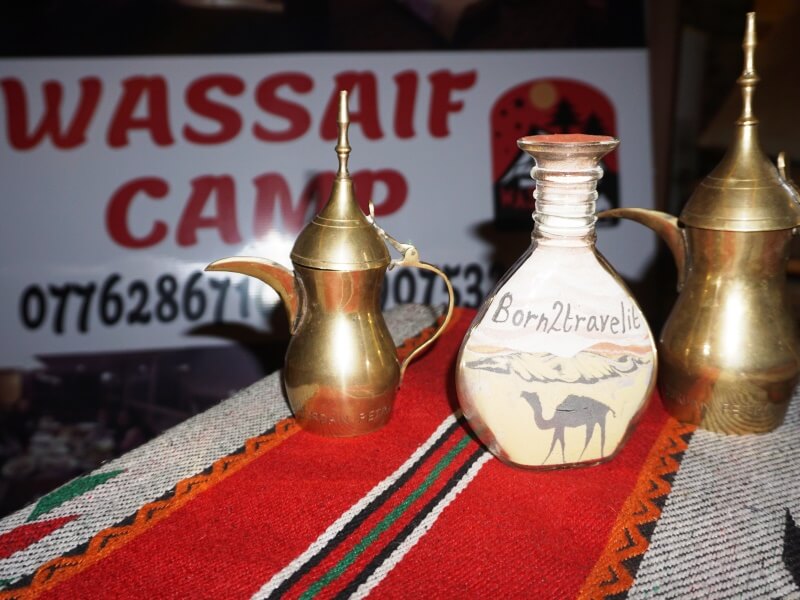
Ready to turn the page and start a new adventure.
Slowly we descend towards the south while the landscape continues to change and become more and more arid: we are in the Wadi Rum desert.
It was not only the spectacular landscape of Wadi Rum with its blued sandstone cliffs and vividly colored dunes that fascinated Lawrence of Arabia as he crossed the land of the Bedouins on the back of a dromedary, but this people themselves with their tenacity of a life in the desert.
Wadi Rum is the desert par excellence: extreme in the scorching heat of summer or in the relentless cold of winter, harsh when the sun breaks the surface of the siqs at dawn or when it cancels the separation between rock and sand at sunset.
We will spend two days completely immersed in this “Martian” landscape, the ideal and natural set of numerous films, the last one being “The martians” with Matt Damon.
On board a large off-road vehicle, with Abu Osama and Nael, we set out to discover its most impressive dunes.
We stop at the dunes of Al Hasany, where the red sand accumulates close to the slopes of Jebel Umm Ulaydiyya. We climb this slope as our feet sink into the cold sand and reach its crest; the best time to observe them is at sunset!
A little further on, after half an hour off road, we decide to stop for a trapper-style lunch, prepared by the skilled Abu Osama who, in a short time, offers us a delicious Bedouin bread by cooking it directly under hot coals. Optimal!
The atmosphere is magnificent, Khaled and Cristina tell us anecdotes of this land while Iago and Nora play in the sand, every now and then, in the distance, some lonely dromedary passes silently in front of us ...
The sun sets and, suddenly, the temperature drops significantly. It's very cold now! Life in the desert is extreme!
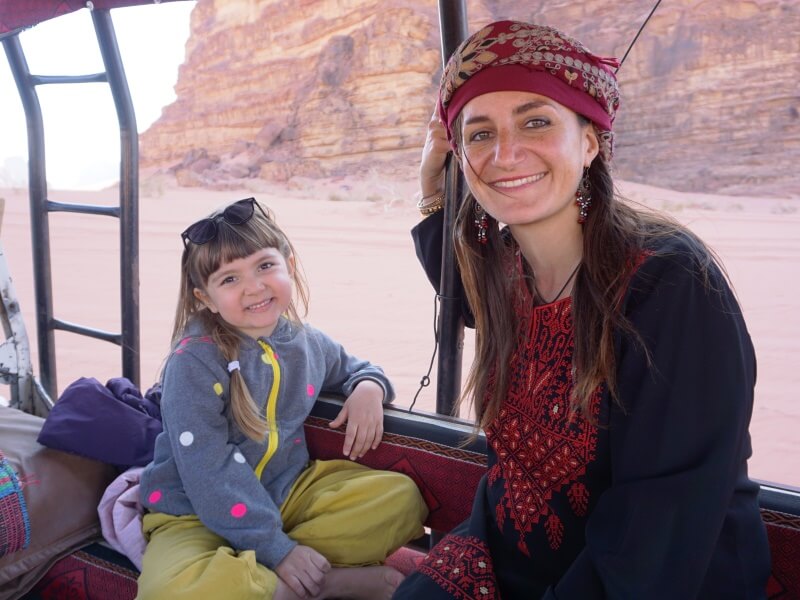
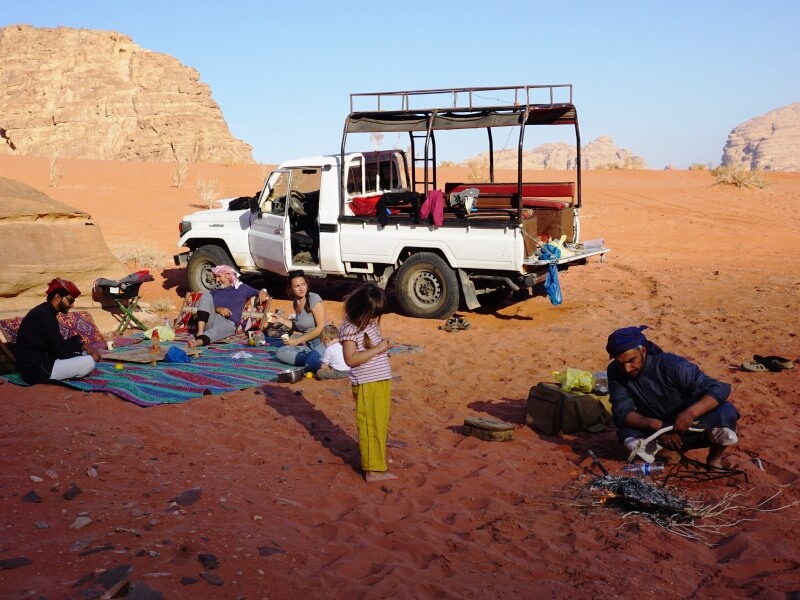
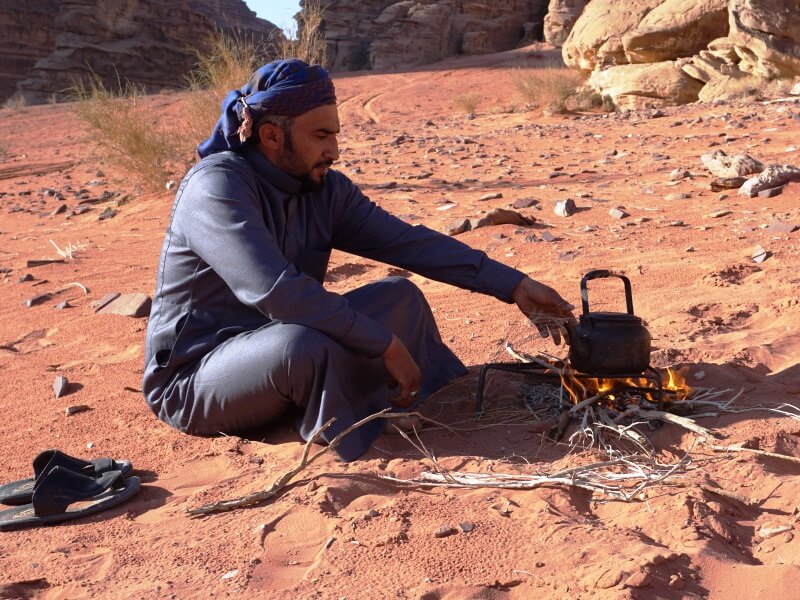
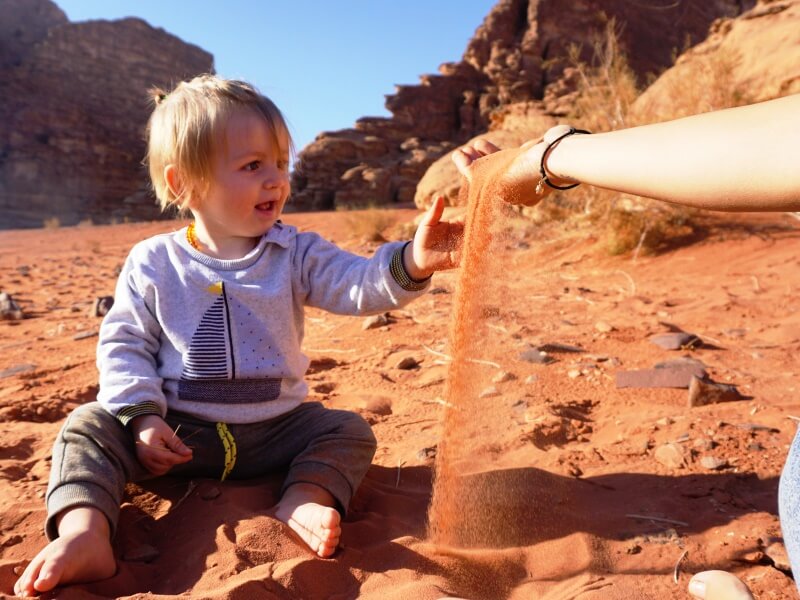
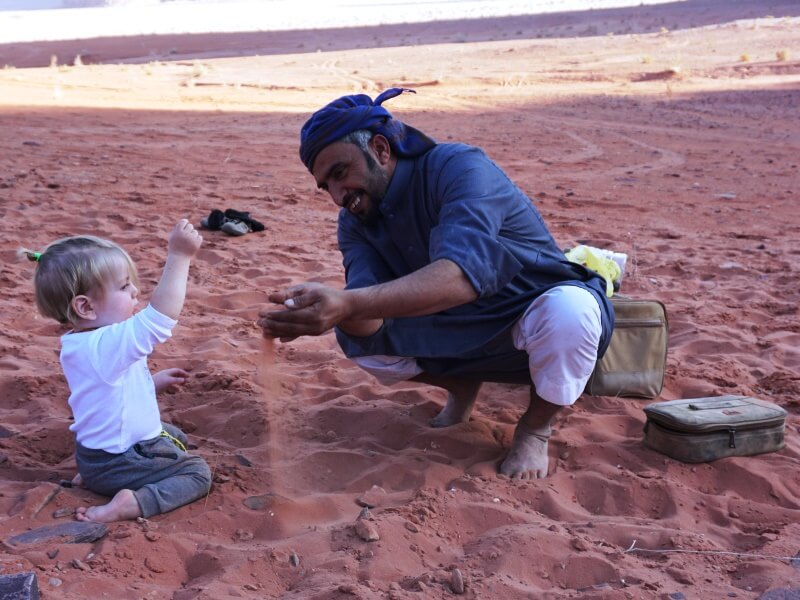
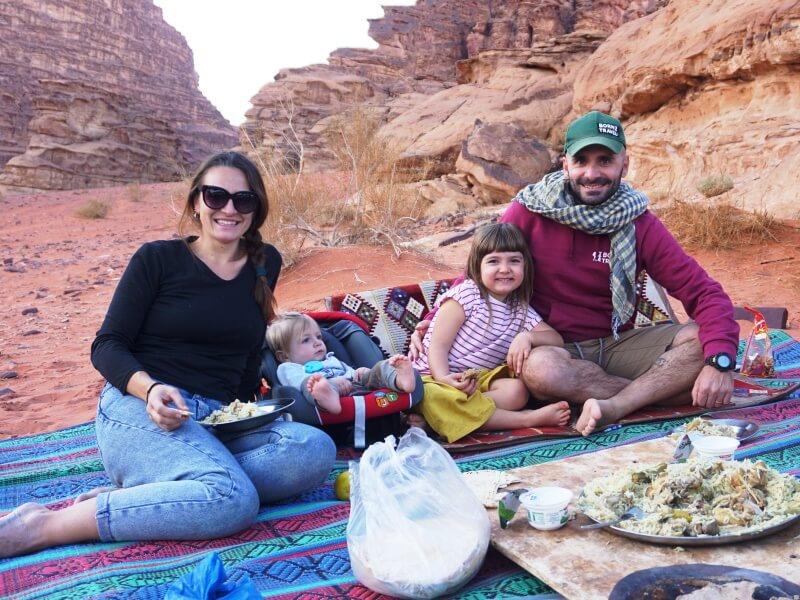
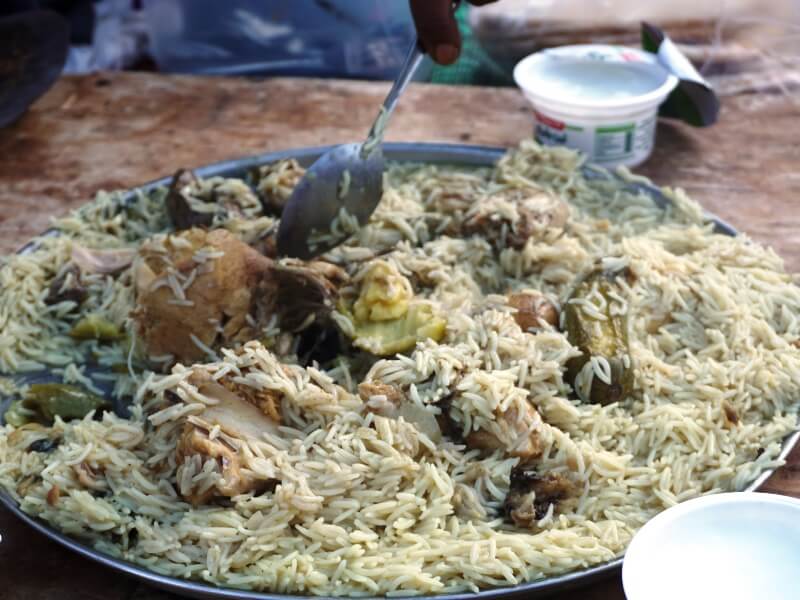
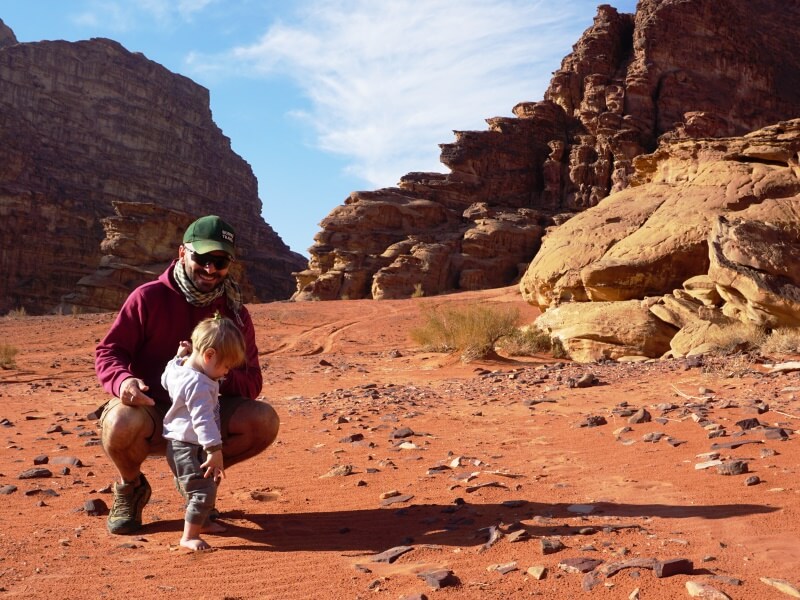
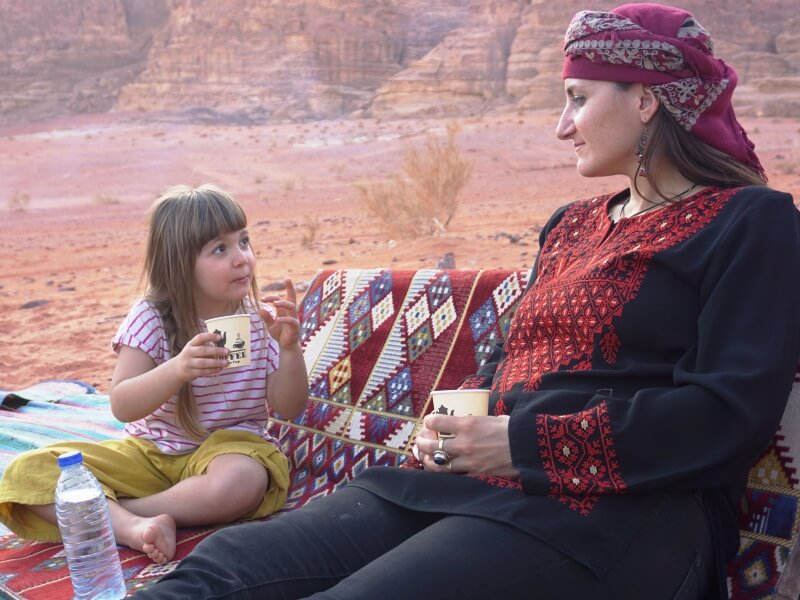
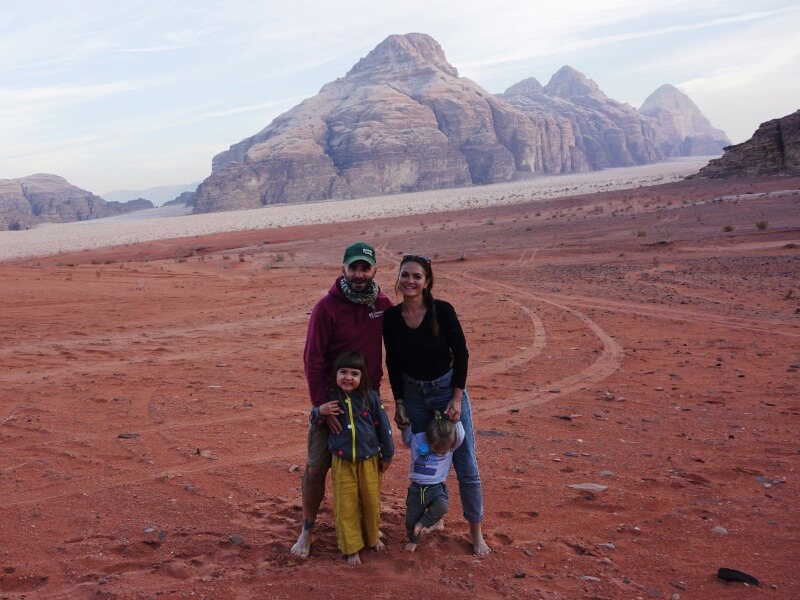
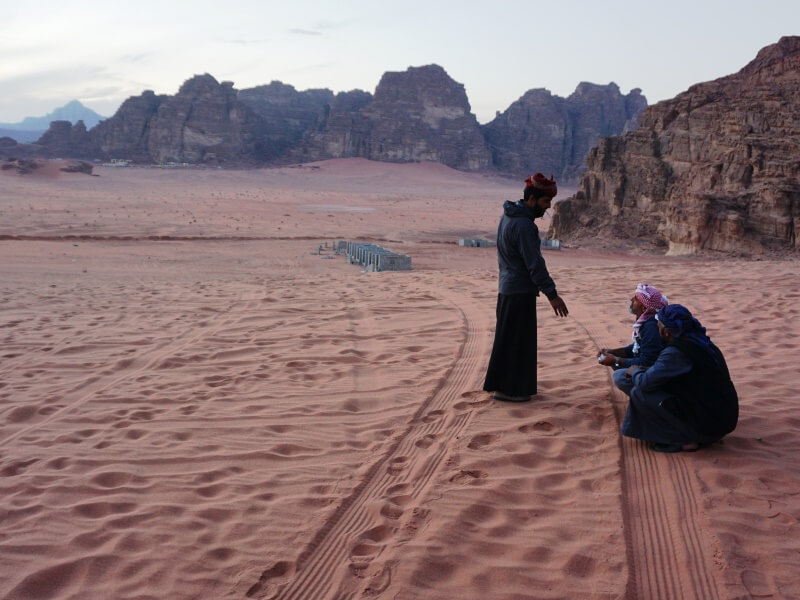
We spend the first night at theHasan Zawaideh Camp where they prepare an excellent dinner cooked directly underground: the so-called: zerb, Bedouin oven buried in the sand.
We leave early in the morning! We load our backpacks on the off-road vehicle and go immersed in the red sand of Wadi Rum!
We stop when we see a field with dromedaries and we take the opportunity to take a short "ride" in the desert giving us another travel memory, indelible especially for little Nora!
Our jeep continues to grind kilometers on the red sand, every now and then we stop to admire the area full of many picturesque spots!
Here are the Alameleh rock inscriptions that date back to Nabataean times and depict caravans of dromedaries, hunting warriors and various types of animals.
The mushroom rock, then the arched rock: a real natural arch created over time whose top can be reached by climbing on the bare rock!
We stop to have lunch again with our trusted chef: Abu Osama whom we meet, with Khaled, spending other moments of great journey in a magical land!
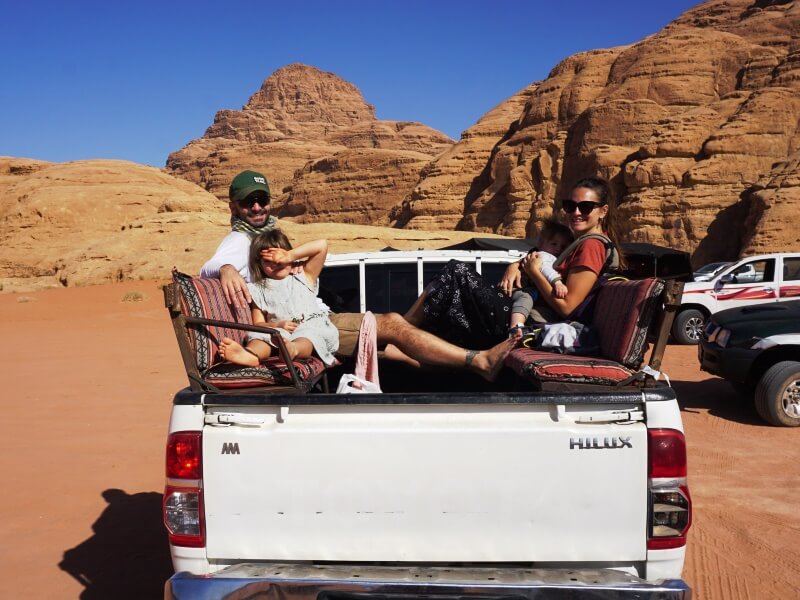
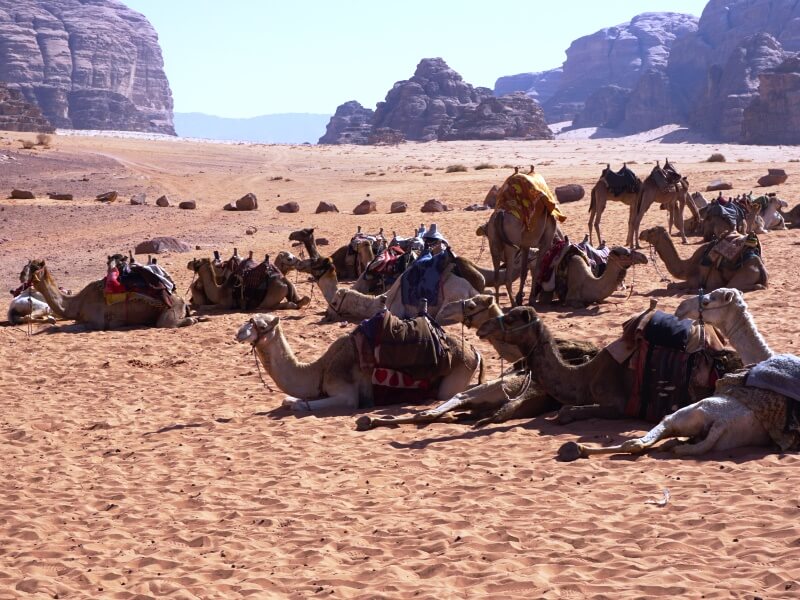
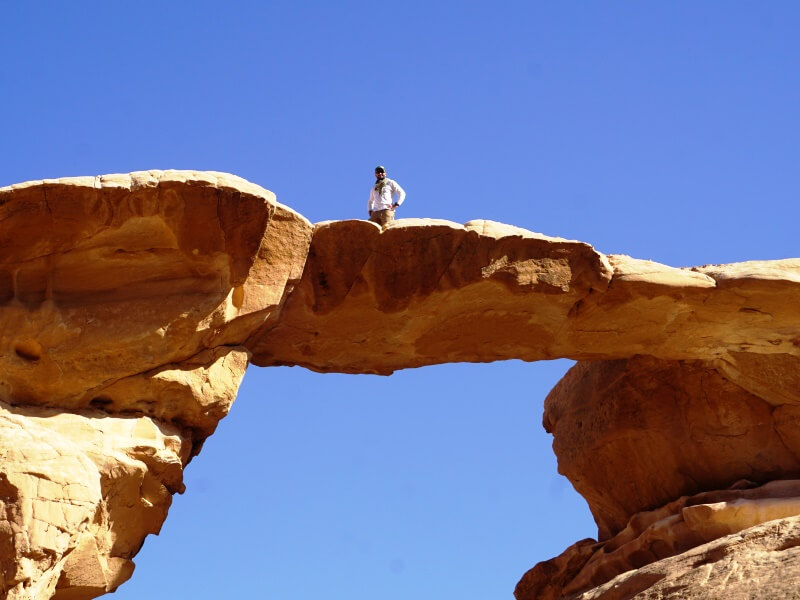
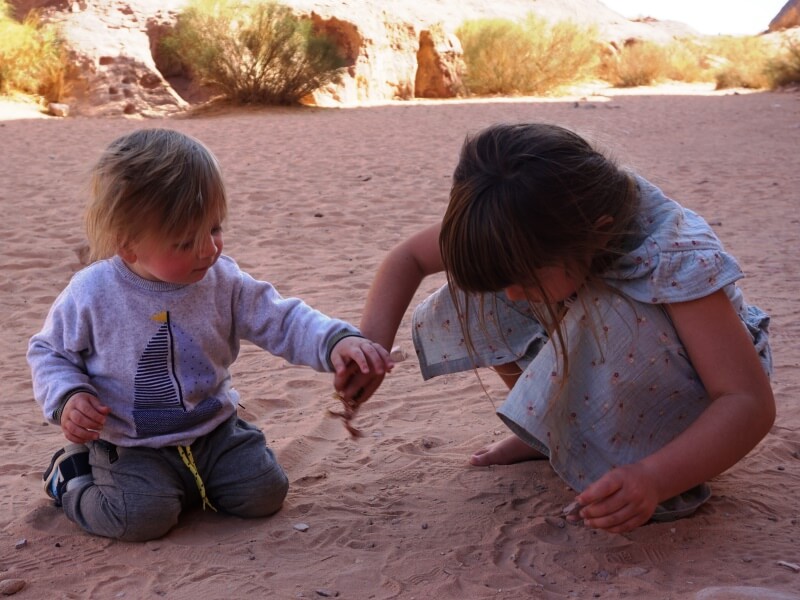
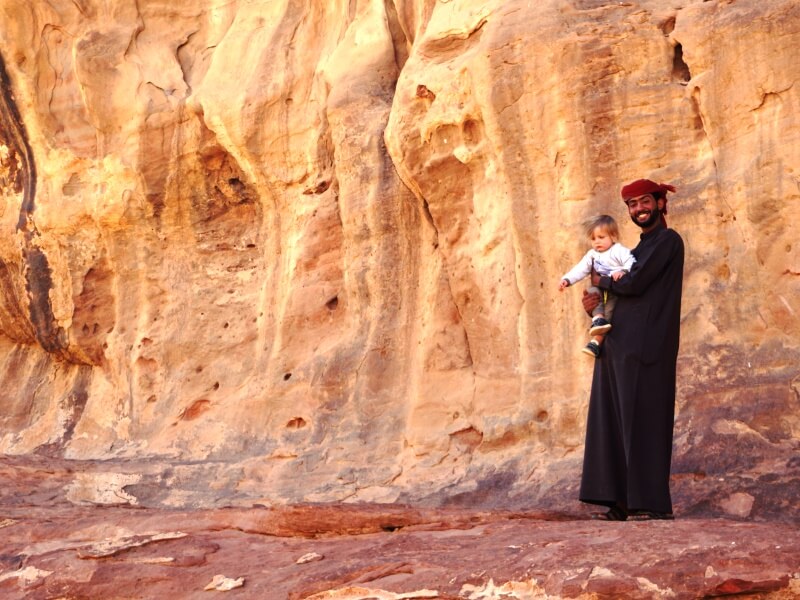
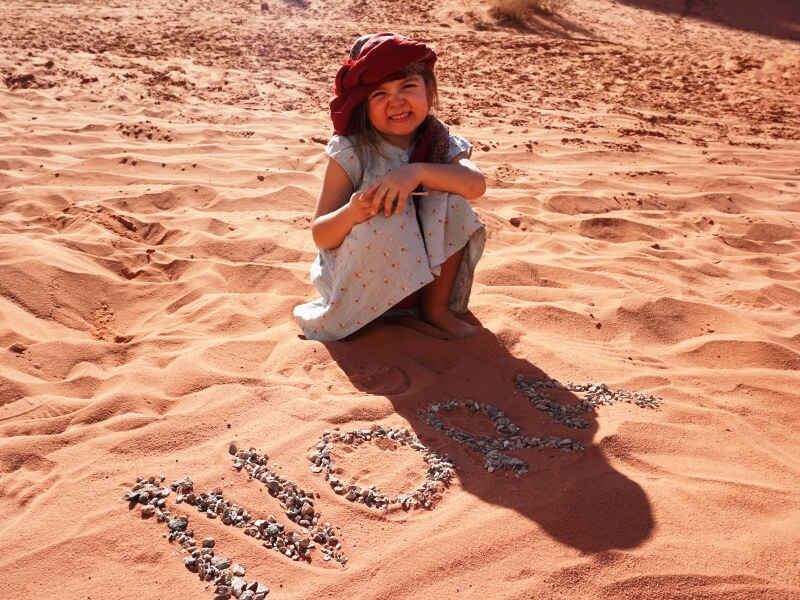
We will spend this night at the Rise Camp Wadi Rum even in a bubble tent! Don't you know what it is? It is a bubble-shaped structure with a large window overlooking where the sun rises! What a sunrise awaits us tomorrow morning, to be enjoyed directly lying under the covers!
A little over an hour's journey from Wadi Rum, we reach the famous Aqaba!
Along the way we stop at an old train station where some trains from another era stand out! Well, this is one of the transit points of the railway line that from Saudi Arabia reached Egypt through the Syria and Jordan. Three dromedaries look at us curiously as we daydream imagining what was in the past.
Here we will spend three days trying to recharge a little from the cold of the desert!
Aqaba is on the border between Israel and Egypt! In fact, three nations can be admired at a glance!
Here the winter temperature rarely drops below 20 ° C, however, in summer, the climate is very hot with temperatures that often exceed 35 ° C but made bearable by the sea breezes!
There isn't much to see, people come here mostly to relax on the beach or to dive and snorkel in the wonderful Red Sea.
King Hussein St (also known as the Corniche) is the main street and especially at sunset it is very romantic when the sun plunges into this crystal clear sea!
Don't miss a visit to the 16th century Aqaba Fort, used as a khan (caravanserai) to welcome pilgrims on their way to Mecca.
The landmark of the city is the imposing 20m by 40m flag that flies on a 137m high flagpole and which represents the symbol of the Arab revolt whose centenary was celebrated in 2017!
The historic center is divided into two areas: the more local and truer one with the elderly with red keffiyehs who, sitting outside the club, smoke the hookah, with the mosques full of faithful and the many characteristic shops!
The other part of Aqaba is that of the large hotels that, especially in the evening, illuminate this city with multicolored lights. This is the part of large franchises, western fast food restaurants but also excellent restaurants!
Thanks to our dear friend Samir we discover the "Al Shinawi Restaurant" where we will dine for two consecutive evenings enjoying truly excellent Jordanian dishes!
We spend two days at theAqaba Adventure Divers, a hotel aimed primarily at divers! Here they organize diving courses and the atmosphere is the fresh and sparkling atmosphere of a youth hostel in which to relax after exploring the depths of the Red Sea.
This morning, putting on their wetsuits and masks, Mark and Nora dive in to enjoy this wonderful show of coral and colorful fish. When traveling with children it is very important to involve them and make them feel protagonists of real "adventures" in order to convey to them the love for discovery and exploration!
If you can, don't miss the glass-bottomed boat ride to spend a couple of fun hours in the middle of the sea!
We definitely turn the page, we pamper ourselves a bit by moving to the Gran Tala Bay!
A 5-star dream!
Private beach, many large swimming pools for all tastes (even a heated one for the little ones), excellent restaurants, baby club, international entertainment ... what more could you want? It doesn't even feel like you're in Jordan!
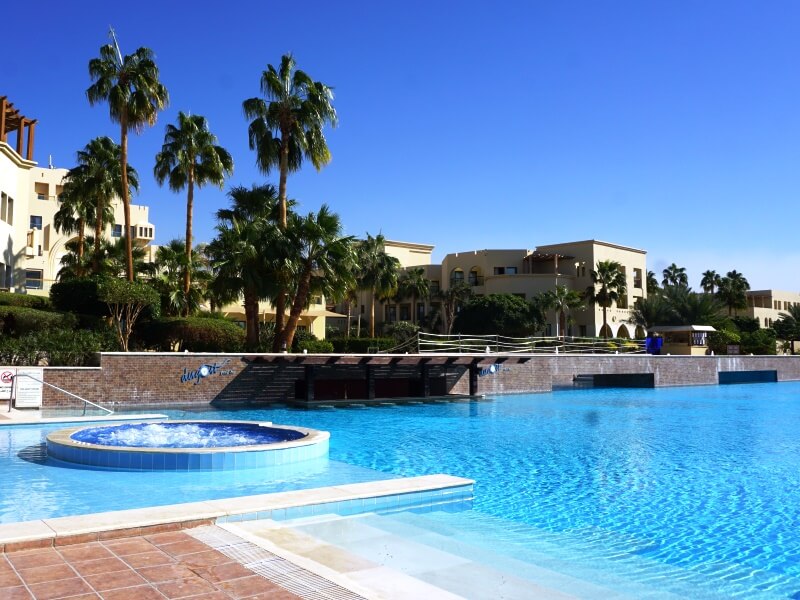
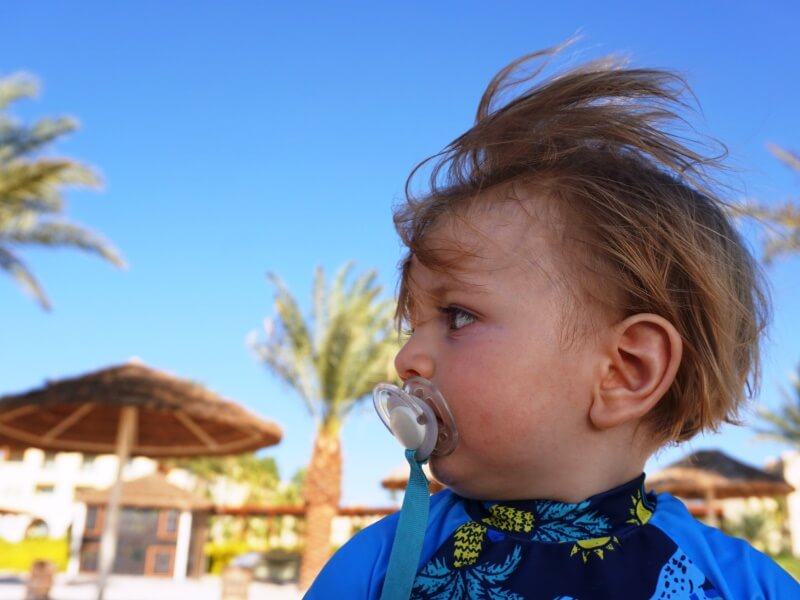
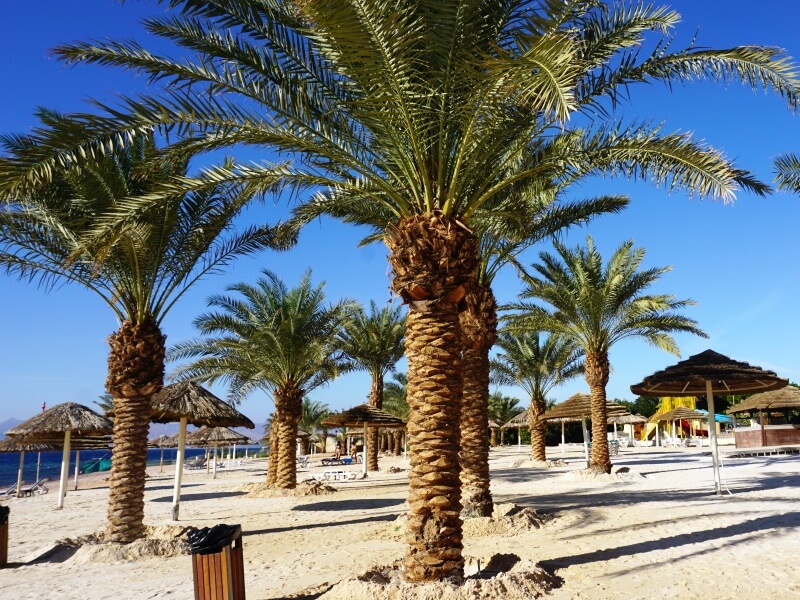
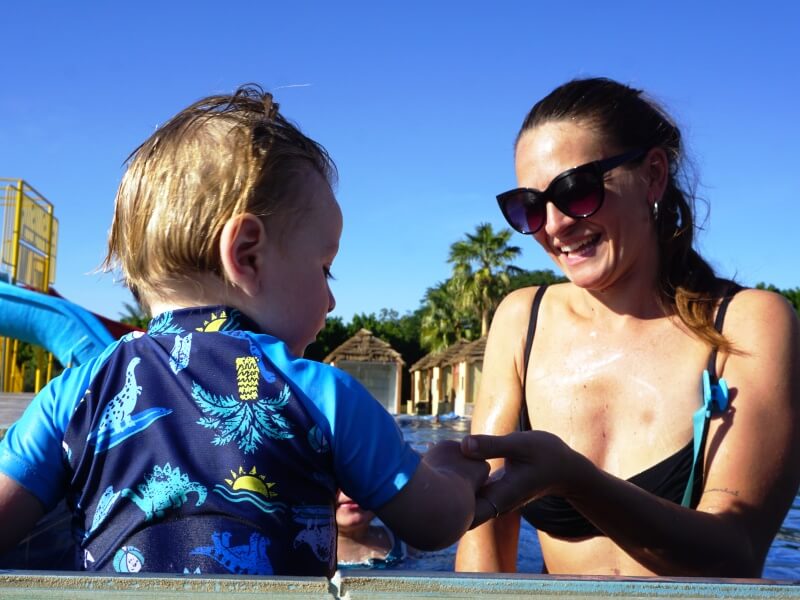
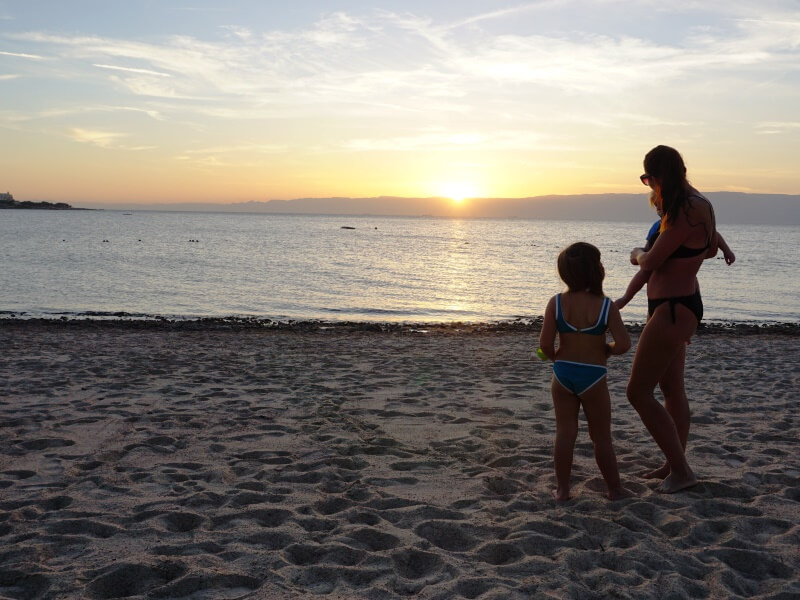
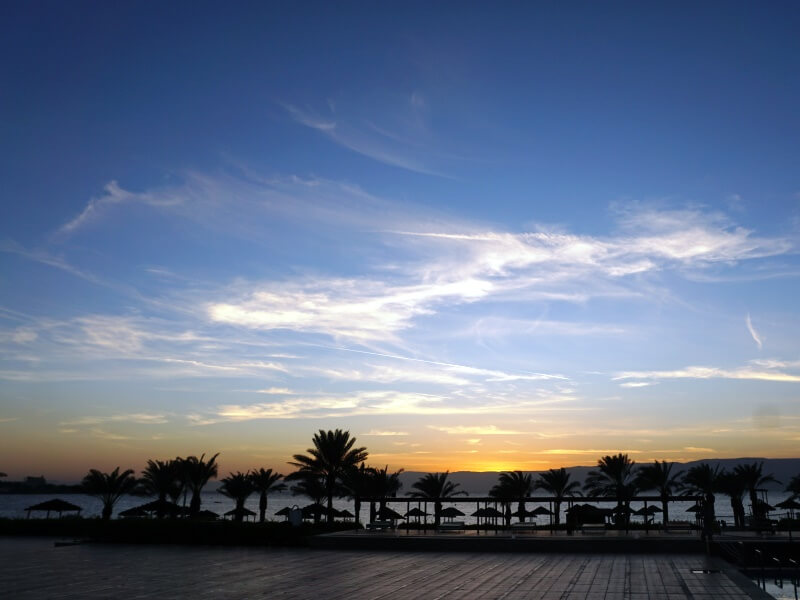
Today we leave, by taxi, to the capital.
The four-hour journey is very pleasant also because the background changes often, we go over many of the places that have made us dream in recent days and we pass from a marine environment of Aqaba to the desert one of Wadi Rum and Petra up to the chaotic city. of Amman!
Here we stay at the “Shams Alweibdeh” Hotel, in the old part of the city, a few steps from the great mosque of King Abdullah I.
We spend the evening wandering around Rainbow Street, an area adjacent to the Downtown that the Jordanians are particularly valuing and which has recently become very touristy thanks to its quaint shops, its restaurants and cafes and the many picturesque spots!
From here, in four steps, we reach the Downtown with its fascinating chaos, its crowded alleys, the shops full of goods, perfumes, sounds that make you feel in the Middle East!
It is normal to be invited for tea by shopkeepers or by strangers met along the way. “Ahlan wa sahlan '” (welcome), the locals will tell you. "Where are you from? Welcome to Jordan. " Dinner at Hashem Restaurant is always a certainty!
For those who want to discover this fantastic country: also consider visiting these other wonders!
The site is particularly important for the coexistence of Roman remains next to an abandoned Ottoman village and for the spectacular view over three countries: Jordan, Syria, Israel and Palestine.
If you have time here you could take the opportunity to make numerous excursions on foot or by bicycle, beekeeping up to local cooking classes.
This site is absolutely one of the most beautiful in northern Jordan and the visit can be done as a day trip from Amman.
Once you have passed the imposing arch of Hadrian that marks the border between the new part of the city and the old one, one immediately understands the great importance and power of the past.
Advancing along the avenue in the shadow of the massive walls, you enter what was once the heart of the city, as evidenced by the large oval square surrounded by columns, which highlights an area of importance both for transit and for city life.
Colonnaded avenues, Roman temples and theaters tell the story of the Imperial period and offer very picturesque sceneries that will make your cameras happy.
The ruins of Jerash constitute the largest and most interesting Roman site in all of Jordan, free entry with the Jordan Pass.
Mount Nebo is said to be the place from which Moses first contemplated the Promised Land, the place he never managed to reach.
According to the Bible, he died at the age of 120 and was buried right near the mountain.
Definitely do not miss the panoramic point of the memorial where now stands a bronze monument made by an Italian artist that symbolizes the suffering and death of Jesus on the cross.
The ancient Crusader stronghold of Karak (or Kerak) rises within the walls of the old city and is one of Jordan's main tourist attractions.
This fortified castle was the legendary place where the battles between the Crusaders (mostly Franks) and the Muslim armies of Saladin (Salah ad-Din) took place.
Today it is very famous, but in the past it was nothing more than one of the many forts built by the Crusaders along an ideal line that went from Aqaba in the south to Turkey in the north.
Madaba is less than an hour's journey from Amman by public transport and is a valid alternative for a day trip from the capital.
For centuries Madaba has been a crossing point for merchant caravans, armies pressing on the borders of other empires, and faith-led pilgrims in search of the Promised Land.
The city has managed to keep the traces of this ancient splendor in the churches, museums, markets and artisan shops.
Certainly the greatest testimony lies in its mosaics, the most famous of which is the one depicting a geographical map that covers the floor of the church of San Giorgio.
Imagine the amazement of the Christian community, intent on digging for the construction of a new church, when, in 1897, they unearthed the well-known mosaic map of Jerusalem and the Holy Land dating back to the sixth century.
With its two million vividly colored stone tiles, it depicts hills, valleys, villages and cities up to the Nile Delta and is certainly one of the highlights of Madaba!
شكر اّردن
“Per quanto siano splendidi, i mosaici non sono l’unica ragione per cui vale la pena di visitare Madaba. Un viaggiatore degli inizi del Novecento racconta di essersi lasciato sparare addosso dalla gente di Madaba solo per farsi riportare in città "come loro ospite e mangiare il loro cibo". Oggi nessuno vi sparerà, ma Madaba rimane la città più accogliente della Giordania nei confronti dei viaggiatori”.
- Lonely Planet -
Error: No feed found.
Please go to the Instagram Feed settings page to create a feed.
6 Responses
Che meraviglia..
Complimenti ragazzi.. leggendo il vostro racconto ho vissuto dei momenti magici viaggiando con voi.
Thanks
Grazie di cuore caro Khaled, averti conosciuto è stato uno dei tanti momenti indimenticabili di questo meraviglioso viaggio che porteremo per sempre nel cuore.
Ci vediamo presto sia in Italia che in Giordania… o chissà altrove… magari in Arabia 😉
Hi family, thank you for a very informative post just at the right time. We are travelling with kids (2 and 6 years old) to Jordan on 31 January and are planning a similar path.
I just wander where did you get this info from?
”To leave Jordan, a PCR (and therefore molecular) swab must be made within 72 hours before embarkation.”
We know about the 2 tests on arrival but I guess requirement of a test on leaving will depend on your destination. We will be returning to Belgium.
Thanks,
Boyan
Dear Boyan,
We are flattered that you found interesting heads up in our reportage, this is the reason why we keep on posting them!
As for the rules to entry-exit the Country, you are right, if there are 2 PCR on the way in, the one you read to go leave the Country, at the moment, is requested just to Italians.
Have a wonderful journey and let us know if you need anything
Thank you! Happy holidays to you as well.
Feel free to share your impressions and feelings when you go back from the amazing Jordan and if you feel like, follow us: http://www.instagram.com/born2travelit